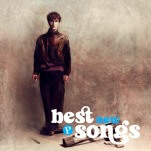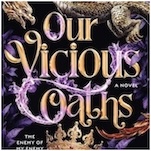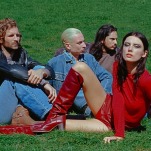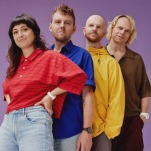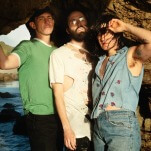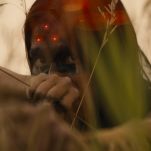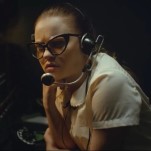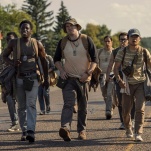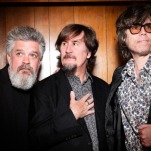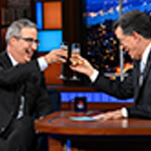The 50 Greatest Albums of 1975
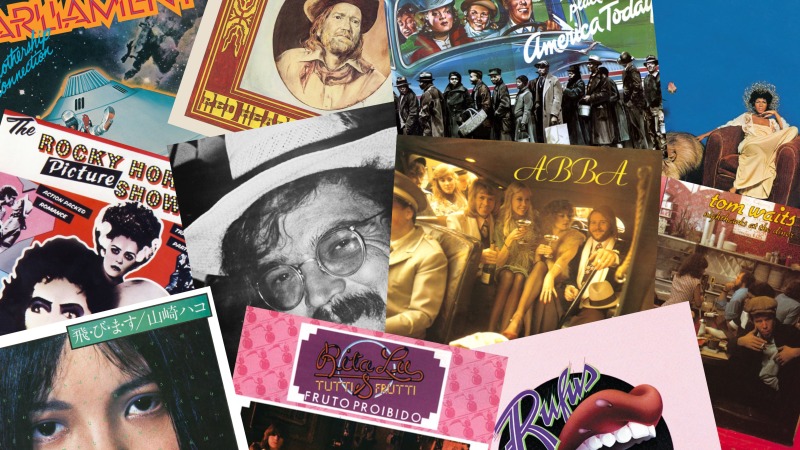
If 1974 was one of the weakest years of its decade, then 1975 was arguably the strongest. A lot of great cultural moments happened happened: Stevie Wonder won his first Album of the Year Grammy, Talking Heads played their first gig at CBGB, Gregg Allman and Cher got married, Simon & Garfunkel reunited on Saturday Night Live, and the Who broke the indoor concert attendance record. But some great albums came out that year, too. As is tradition here at Paste, we’ve assembled a list of which releases we think are the best. There’s a little something of everything in here, so I hope you leave this ranking as curious as you are frustrated by my work.
For this list, a few on-the-cusp albums are noticeably missing—namely Lou Reed’s Coney Island Baby, Michael Hurley’s Have Moicy!, and Heart’s Dreamboat Annie, all of which have documented releases in ‘75 and ‘76. For the sake of fairness, I’m going to save those albums for our list next year, since no one can seem to agree on when Coney Island Baby actually came out and Dreamboat Annie didn’t hit US shelves until ‘76. There are no live albums featured here, so please don’t be upset that notable KISS and Bob Marley titles are missing. I promise those records will be on another relevant list soon! So, without further ado, here are the 50 greatest albums of 1975. Let me know in the comments which albums are your favorite and which ones I shouldn’t have left behind.

50. Emmylou Harris: Elite Hotel
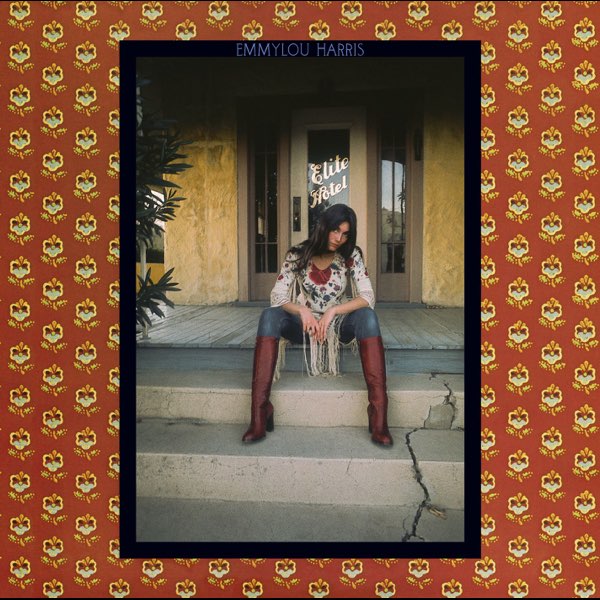 Emmylou Harris made two great albums in 1975: Elite Hotel and Pieces of the Sky. While the latter has one of her best-known songs (“Boulder to Birmingham”), I find myself returning to Elite Hotel far more often. It was her first #1 album on the country charts, and her cover of Patsy Cline’s hit song “Sweet Dreams” went to #1, as did “Together Again.” She even found success in the pop realm when she remade the Beatles’ “Here, There and Everywhere.” There’s a good argument to be made that Harris was the vocal MVP of the ‘70s, thanks to her singing on albums by Gram Parsons, Neil Young, and Bob Dylan, and Elite Hotel is a great example of why her voice was so in-demand 50 years ago, as her work on these songs are free of imperfections. The standout remains “Together Again,” which finds Harris singing in harmony with Linda Ronstadt 12 years before they’d team up with Dolly Parton on Trio. —Matt Mitchell
Emmylou Harris made two great albums in 1975: Elite Hotel and Pieces of the Sky. While the latter has one of her best-known songs (“Boulder to Birmingham”), I find myself returning to Elite Hotel far more often. It was her first #1 album on the country charts, and her cover of Patsy Cline’s hit song “Sweet Dreams” went to #1, as did “Together Again.” She even found success in the pop realm when she remade the Beatles’ “Here, There and Everywhere.” There’s a good argument to be made that Harris was the vocal MVP of the ‘70s, thanks to her singing on albums by Gram Parsons, Neil Young, and Bob Dylan, and Elite Hotel is a great example of why her voice was so in-demand 50 years ago, as her work on these songs are free of imperfections. The standout remains “Together Again,” which finds Harris singing in harmony with Linda Ronstadt 12 years before they’d team up with Dolly Parton on Trio. —Matt Mitchell
49. Sadistic Mika Band: Hot! Menu
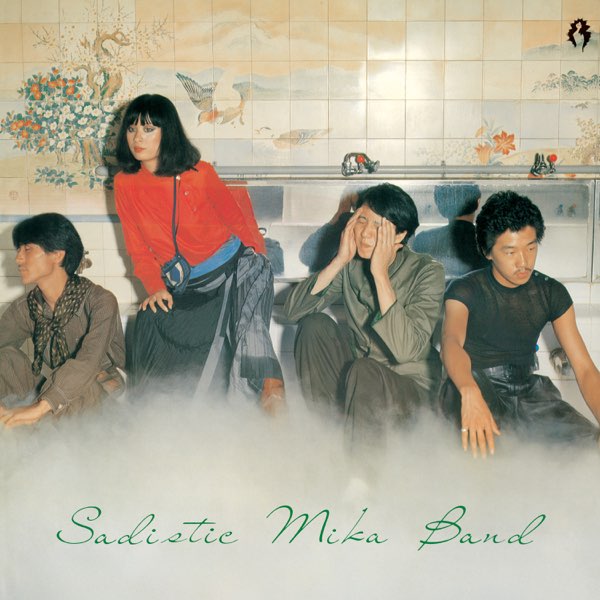 Masayoshi Takanaka is one of the greatest living guitarists. But before he was a savant with a Stratocaster, he was in Kazuhiko Katō’s Sadistic Mika Band after the disbandment of his own Flied Egg group. Sadistic Mika Band were glam-rock pioneers in Osaka, and their third LP (and final until 1989), Hot! Menu, is a transportive, funky, delectable artifact from the pop’s pre-punk death rattle. They channeled Western trends, and the lead vocals of Mika (Katō’s wife) would later influence bands like Blondie and Strawberry Switchblade. In the UK, they were the opening act on Roxy Music’s Siren Tour, playing warm numbers like “Hey Gokigen Wa Ikaga” and “Wa-Kah! Chico” to their biggest-ever crowds. There’s jazz in this music, white-hot funk drenched in proggy overtures too. Takanaka’s guitars sweep, sway, and saturate, growing spacey in the company of Tsugutoshi Goto’s fretless bass before sprawling into melancholy when brushed against Mika’s sorrowed chirp on “Aquablue.” Then there is “Tequila Sunrise,” a vibrant finale full of field recordings and twangy guitar. The noise is always right beside us, even when Sadistic Mika Band sound like they’re performing from some faraway universe. —Matt Mitchell
Masayoshi Takanaka is one of the greatest living guitarists. But before he was a savant with a Stratocaster, he was in Kazuhiko Katō’s Sadistic Mika Band after the disbandment of his own Flied Egg group. Sadistic Mika Band were glam-rock pioneers in Osaka, and their third LP (and final until 1989), Hot! Menu, is a transportive, funky, delectable artifact from the pop’s pre-punk death rattle. They channeled Western trends, and the lead vocals of Mika (Katō’s wife) would later influence bands like Blondie and Strawberry Switchblade. In the UK, they were the opening act on Roxy Music’s Siren Tour, playing warm numbers like “Hey Gokigen Wa Ikaga” and “Wa-Kah! Chico” to their biggest-ever crowds. There’s jazz in this music, white-hot funk drenched in proggy overtures too. Takanaka’s guitars sweep, sway, and saturate, growing spacey in the company of Tsugutoshi Goto’s fretless bass before sprawling into melancholy when brushed against Mika’s sorrowed chirp on “Aquablue.” Then there is “Tequila Sunrise,” a vibrant finale full of field recordings and twangy guitar. The noise is always right beside us, even when Sadistic Mika Band sound like they’re performing from some faraway universe. —Matt Mitchell
48. Tom Waits: Nighthawks at the Diner
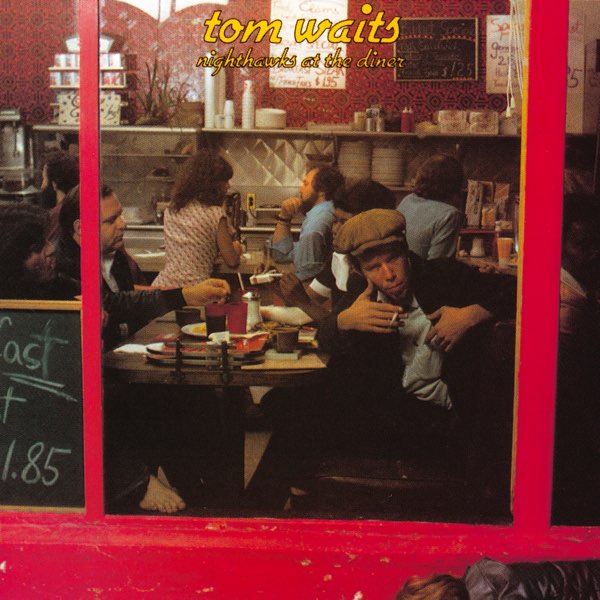 Recorded over two days at the Record Plant in Los Angeles in front of a small audience, Tom Waits’ third album embodies the loose, improvisational mood of a jazz club weeknight. It’s 73 minutes of pure class and entertainment, sprawling and rambunctious like a Beat novel yet powerfully evocative and washed by near-dawn restlessness. Hearing these songs, you start to believe Waits might sing them forever. The 11-minute “Nighthawk Postcards (From Easy Street)” is the centerpiece, while “On a Foggy Night,” “Emotional Weather Report,” and “Big Joe and Phantom 309” surround the miscellany with inebriational travelogues of drunken pastorals. The music, sometimes nothing more than a backdrop for Waits’ overblown antics, is dramatic and pensive, as Pete Christlieb’s saxophone angles often into curiosity and Mike Melvoin’s piano twinkles with sell-out enthusiasm. Nighthawks at the Diner aches with pizzazz yet drowns in Viceroy smoke. Tom Waits is larger-than-life here, packed with detail and delighted by the claps and laughter before him. He’s like Frank Sinatra, until somebody picks him up off the floor. —Matt Mitchell
Recorded over two days at the Record Plant in Los Angeles in front of a small audience, Tom Waits’ third album embodies the loose, improvisational mood of a jazz club weeknight. It’s 73 minutes of pure class and entertainment, sprawling and rambunctious like a Beat novel yet powerfully evocative and washed by near-dawn restlessness. Hearing these songs, you start to believe Waits might sing them forever. The 11-minute “Nighthawk Postcards (From Easy Street)” is the centerpiece, while “On a Foggy Night,” “Emotional Weather Report,” and “Big Joe and Phantom 309” surround the miscellany with inebriational travelogues of drunken pastorals. The music, sometimes nothing more than a backdrop for Waits’ overblown antics, is dramatic and pensive, as Pete Christlieb’s saxophone angles often into curiosity and Mike Melvoin’s piano twinkles with sell-out enthusiasm. Nighthawks at the Diner aches with pizzazz yet drowns in Viceroy smoke. Tom Waits is larger-than-life here, packed with detail and delighted by the claps and laughter before him. He’s like Frank Sinatra, until somebody picks him up off the floor. —Matt Mitchell
47. Minnie Riperton: Adventures in Paradise
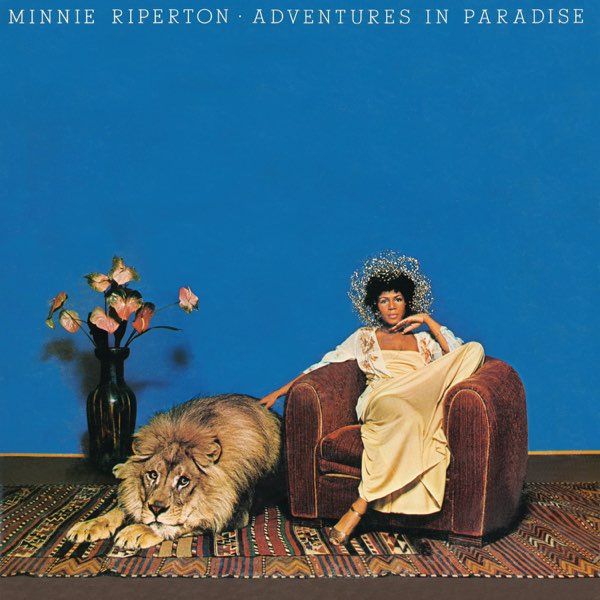 A year prior, Minnie Riperton scored a gold record and Top 5 placement on the Billboard 200 with Perfect Angel—thanks to the #1 hit “Lovin’ You” and Riperton’s use of a whistle register. But it’s important to remember that her vocal range carries five octaves, and third album, Adventures in Paradise, is perhaps the greatest encapsulation of that dynamism. Perfect Angel co-producer Stevie Wonder was working on Songs in the Key of Life at the time, so Stewart Levine was hired to co-produce with Riperton and her husband, Richard Rudolph. The desire-driven slow jam of “Inside My Love” is playfully sensual and brimming with double entendres, while opening song “Baby, This Love I Have” saunters through Jim Horn and Tom Scott’s saxophone medley and Riperton’s glass-breaking falsetto and “Love and Its Glory” is a soulful teenage love drama, à la Romeo & Juliet for the disco era. —Matt Mitchell
A year prior, Minnie Riperton scored a gold record and Top 5 placement on the Billboard 200 with Perfect Angel—thanks to the #1 hit “Lovin’ You” and Riperton’s use of a whistle register. But it’s important to remember that her vocal range carries five octaves, and third album, Adventures in Paradise, is perhaps the greatest encapsulation of that dynamism. Perfect Angel co-producer Stevie Wonder was working on Songs in the Key of Life at the time, so Stewart Levine was hired to co-produce with Riperton and her husband, Richard Rudolph. The desire-driven slow jam of “Inside My Love” is playfully sensual and brimming with double entendres, while opening song “Baby, This Love I Have” saunters through Jim Horn and Tom Scott’s saxophone medley and Riperton’s glass-breaking falsetto and “Love and Its Glory” is a soulful teenage love drama, à la Romeo & Juliet for the disco era. —Matt Mitchell
46. Roy Wood: Mustard
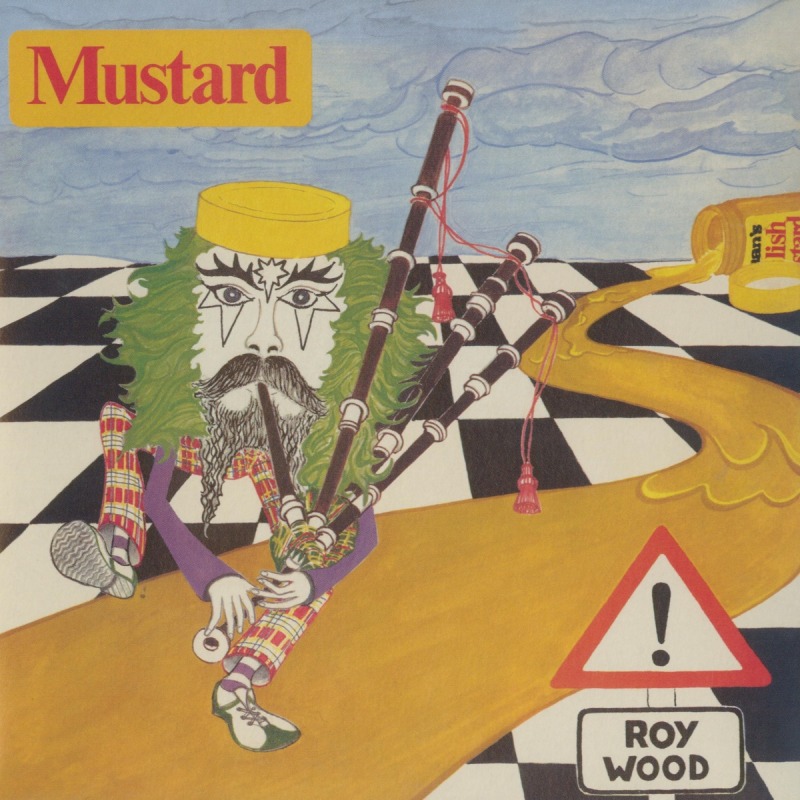 After co-founding Electric Light Orchestra with Jeff Lynne, the Move’s Roy Wood departed the band in 1972 despite playing on just a dozen tracks (he was uncredited on two of them). The truth about Wood, a madcap Englishman with a penchant for wigged-out glam-rock, was that his impulses were always just a bit too loose and left-of-center for Lynn’s always-perfect ELO sound. He would form the group Wizzard (not to be confused with Kid Cudi’s rock band WZRD) before investing in his own solo material. Wood was a disciple of Spector’s Wall of Sound production style, emulating smorgasbords of sub-genres in 40-minute packages. His second solo LP, Mustard, is an especially awesome fusion of glam, psych-rock, proto-metal, blues, and jazz. Wood pulled influence from the Andrews Sisters and the Beach Boys, painting strangeness into tracks like “The Rain Came Down on Everything” and “Why Does Such a Pretty Girl Sing Those Sad Songs.” Overlooked and maligned 50 years ago, Wood’s medley of eccentric noise has only become beloved in retrospect. Spend any amount of time with a recent Lemon Twigs record and you’ll catch my drift. —Matt Mitchell
After co-founding Electric Light Orchestra with Jeff Lynne, the Move’s Roy Wood departed the band in 1972 despite playing on just a dozen tracks (he was uncredited on two of them). The truth about Wood, a madcap Englishman with a penchant for wigged-out glam-rock, was that his impulses were always just a bit too loose and left-of-center for Lynn’s always-perfect ELO sound. He would form the group Wizzard (not to be confused with Kid Cudi’s rock band WZRD) before investing in his own solo material. Wood was a disciple of Spector’s Wall of Sound production style, emulating smorgasbords of sub-genres in 40-minute packages. His second solo LP, Mustard, is an especially awesome fusion of glam, psych-rock, proto-metal, blues, and jazz. Wood pulled influence from the Andrews Sisters and the Beach Boys, painting strangeness into tracks like “The Rain Came Down on Everything” and “Why Does Such a Pretty Girl Sing Those Sad Songs.” Overlooked and maligned 50 years ago, Wood’s medley of eccentric noise has only become beloved in retrospect. Spend any amount of time with a recent Lemon Twigs record and you’ll catch my drift. —Matt Mitchell
45. Bob Dylan & The Band: The Basement Tapes
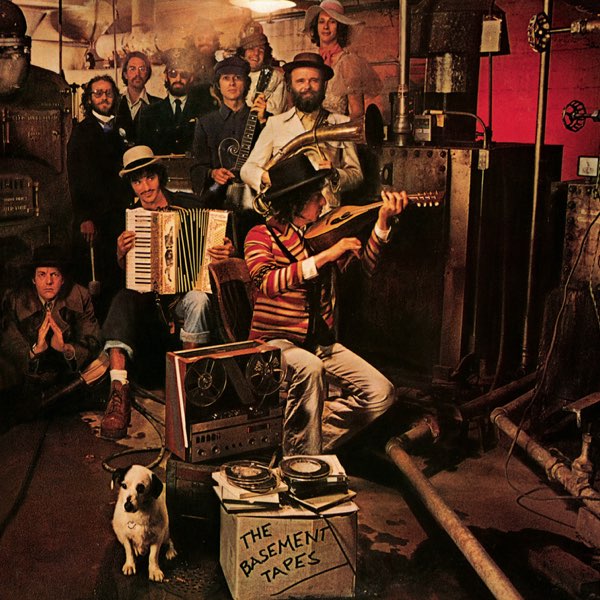 Originally recorded by Bob Dylan between 1967 and 1968 (and later overdubbed in 1975) with The Band (at the time known as The Hawks) after his motorcycle accident in 1966, The Basement Tapes is a rich, loose, and animated archival of 76 minutes of raucous music-making between some of the best performers of a generation. The story goes that over 100 songs were recorded during the sessions—including original material, covers, and traditional takes—but the 24 entries we get on The Basement Tapes are some of the most inventive musings Dylan ever had a hand in finishing. In hindsight, it’s clear just how crucial these songs bridged two eras of Dylan’s career, helping him move on from the poetic, organ-and-electric-guitar rock and roll of Highway 61 Revisited and Blonde on Blonde to the Americana and country stylings that would influence John Wesley Harding and Nashville Skyline. The heavy hitter from the batch is “You Ain’t Goin’ Nowhere,” but songs like “This Wheel’s On Fire,” “Yazzo Street Scandal,” and “Goin’ to Acapulco” are incredibly fun moments to revisit. —Matt Mitchell
Originally recorded by Bob Dylan between 1967 and 1968 (and later overdubbed in 1975) with The Band (at the time known as The Hawks) after his motorcycle accident in 1966, The Basement Tapes is a rich, loose, and animated archival of 76 minutes of raucous music-making between some of the best performers of a generation. The story goes that over 100 songs were recorded during the sessions—including original material, covers, and traditional takes—but the 24 entries we get on The Basement Tapes are some of the most inventive musings Dylan ever had a hand in finishing. In hindsight, it’s clear just how crucial these songs bridged two eras of Dylan’s career, helping him move on from the poetic, organ-and-electric-guitar rock and roll of Highway 61 Revisited and Blonde on Blonde to the Americana and country stylings that would influence John Wesley Harding and Nashville Skyline. The heavy hitter from the batch is “You Ain’t Goin’ Nowhere,” but songs like “This Wheel’s On Fire,” “Yazzo Street Scandal,” and “Goin’ to Acapulco” are incredibly fun moments to revisit. —Matt Mitchell
44. Burning Spear: Marcus Garvey
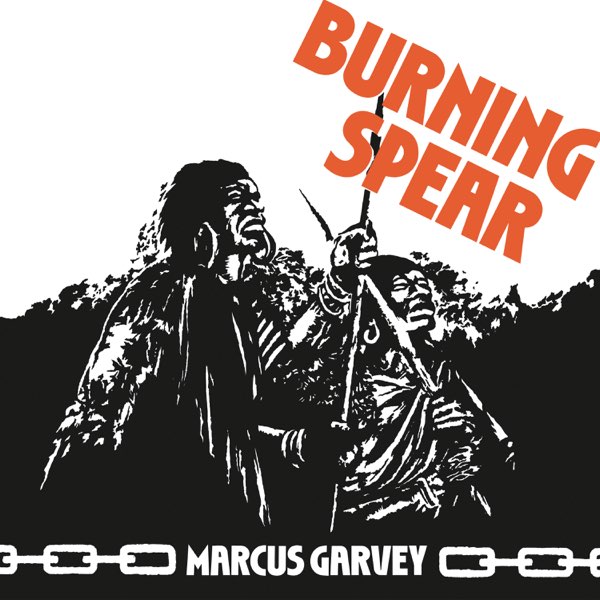 Burning Spear, the stage name of Rastafarian hero Winston Rodney OD, is among the most important dub and roots reggae musicians of the ‘70s. Rodney’s worldview was shaped by the teachings of political activist and Rastafari prophet Marcus Garvey, who founded the UNIA-ACL and was a Pan-Africanist and Black Nationalist in the early 20th century. Rodney was especially drawn to Garvey’s outlook on self-determination and, through the initial advising of Bob Marley, began recording his own music. His third album, Marcus Garvey, pays tribute to Garvey through emotional, politically-charged reggae and funk diatribes. Songs like “Live Good” and “Give Me” arrived in 1975 full of demands for reparations and fantasies of peace. Rodney’s 2,000-year proverbs weren’t just historical paeans—they were non-negotiables. —Matt Mitchell
Burning Spear, the stage name of Rastafarian hero Winston Rodney OD, is among the most important dub and roots reggae musicians of the ‘70s. Rodney’s worldview was shaped by the teachings of political activist and Rastafari prophet Marcus Garvey, who founded the UNIA-ACL and was a Pan-Africanist and Black Nationalist in the early 20th century. Rodney was especially drawn to Garvey’s outlook on self-determination and, through the initial advising of Bob Marley, began recording his own music. His third album, Marcus Garvey, pays tribute to Garvey through emotional, politically-charged reggae and funk diatribes. Songs like “Live Good” and “Give Me” arrived in 1975 full of demands for reparations and fantasies of peace. Rodney’s 2,000-year proverbs weren’t just historical paeans—they were non-negotiables. —Matt Mitchell
43. AC/DC: T.N.T.
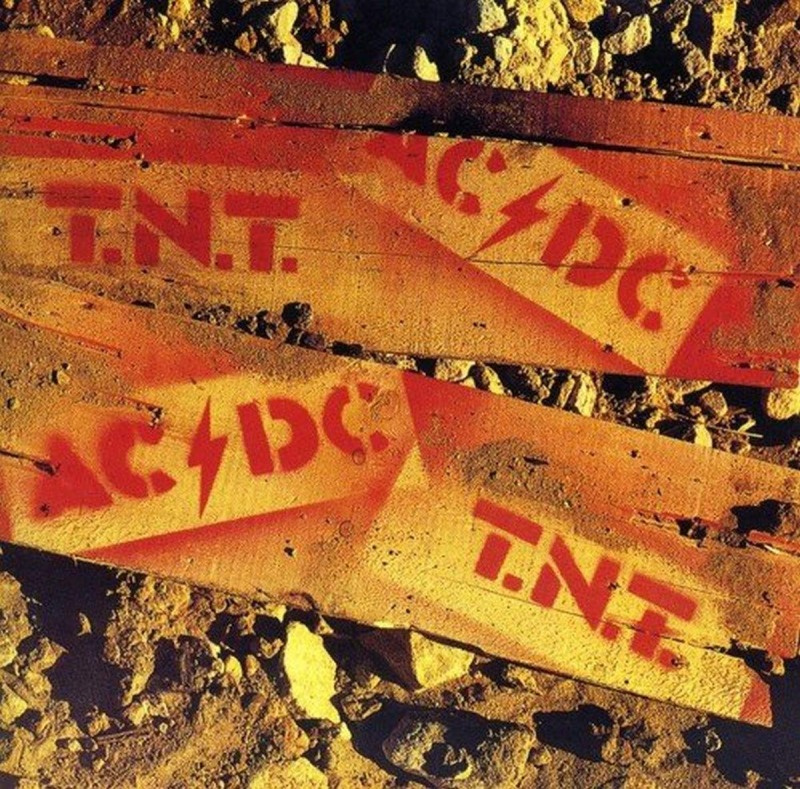 The timeline of AC/DC’s first two albums is a nearly impossible logic puzzle to wrap your head around initially. High Voltage was their debut, seeing a release in Australasia in 1975 and globally in 1976. But the latter edition was more of an amalgamation of songs from the former and the band’s “second” album, T.N.T. If that still doesn’t make sense, don’t worry about it. T.N.T. is a great distillation of what made AC/DC so great in the beginning: head-splitting riffs, hedonistic lyrics, and the tandem of Bon Scott’s vocal debauchery and Angus Young’s enthralling licks. “It’s a Long Way to the Top (If You Wanna Rock ‘n’ Roll),” cemented in history forever by School of Rock, is an opening track whose first vibrations are still going. But I’ve put a lot of stock in “The Jack,” “Rocker,” and “Can I Sit Next to You, Girl,” all of which put Scott’s seductive, playful bravado on display while Malcolm Young’s backline of rhythm guitar anchors his brother Angus’ machine gun riffs. T.N.T. is heretic glam rock free-falling into the clutches of hard-nosed, proto-metal shredding. Not a bad introduction to a band of twenty-something Aussies on diets of cigarettes, milk, and too-tight jeans, fronted by a school uniform-clad punk weighing 140 pounds soaking wet. —Matt Mitchell
The timeline of AC/DC’s first two albums is a nearly impossible logic puzzle to wrap your head around initially. High Voltage was their debut, seeing a release in Australasia in 1975 and globally in 1976. But the latter edition was more of an amalgamation of songs from the former and the band’s “second” album, T.N.T. If that still doesn’t make sense, don’t worry about it. T.N.T. is a great distillation of what made AC/DC so great in the beginning: head-splitting riffs, hedonistic lyrics, and the tandem of Bon Scott’s vocal debauchery and Angus Young’s enthralling licks. “It’s a Long Way to the Top (If You Wanna Rock ‘n’ Roll),” cemented in history forever by School of Rock, is an opening track whose first vibrations are still going. But I’ve put a lot of stock in “The Jack,” “Rocker,” and “Can I Sit Next to You, Girl,” all of which put Scott’s seductive, playful bravado on display while Malcolm Young’s backline of rhythm guitar anchors his brother Angus’ machine gun riffs. T.N.T. is heretic glam rock free-falling into the clutches of hard-nosed, proto-metal shredding. Not a bad introduction to a band of twenty-something Aussies on diets of cigarettes, milk, and too-tight jeans, fronted by a school uniform-clad punk weighing 140 pounds soaking wet. —Matt Mitchell
42. Doji Morita: Good Bye
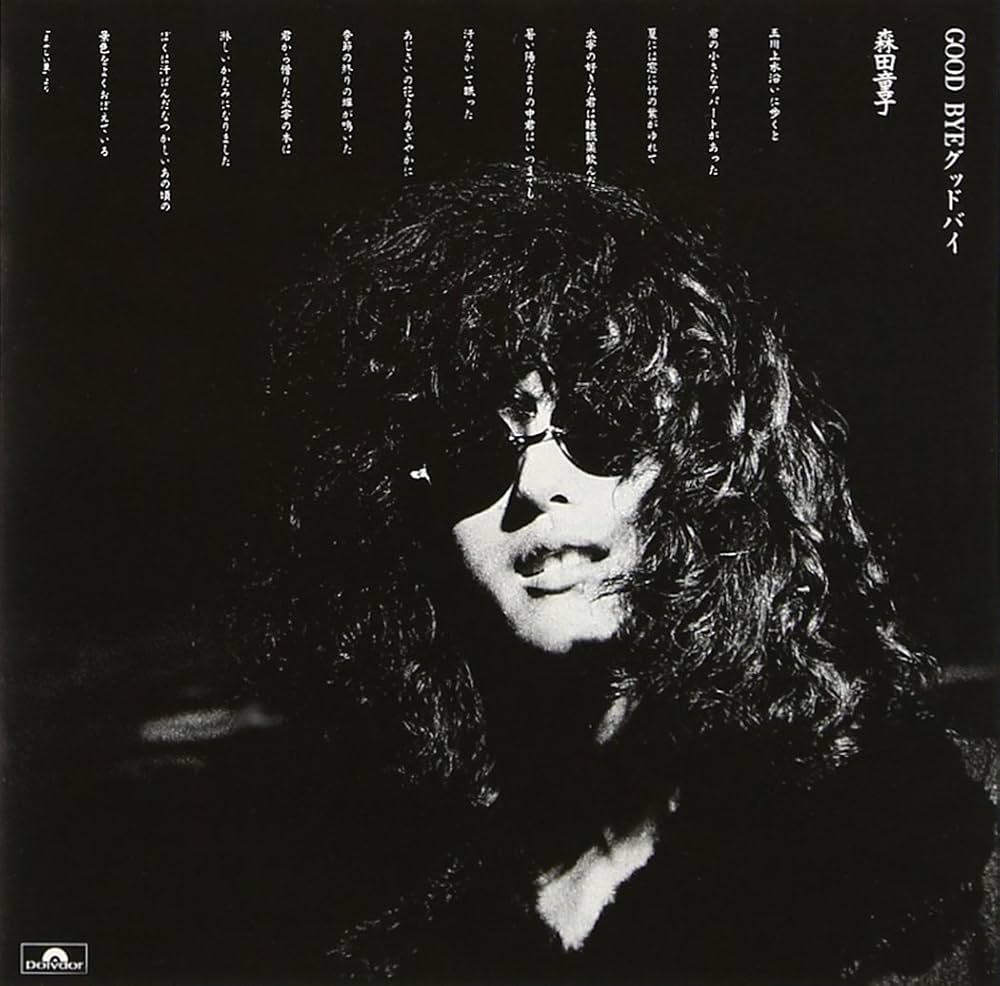 Looking at the state of Japanese music in 1975, there were many threads being tugged at. Psychedelia and glam-rock were heavy on the mind, while electronica and synth-pop were nearly in focus. But let me regale you. I present: Doji Morita’s Good Bye, an album so wonderfully somber you may just weep without knowing any of the words. Morita was famously private, maybe one of the first great “anonymous rock stars.” And yet, her music was tremendously funereal and close-chested. Good Bye is chamber folk music unlike anything I’ve ever listened to, strands of bittersweet performance that transcend the language barrier. I can hear Morita singing, and I can feel her singing, too. The finger-picked melodies are potently elemental, and her voice could be, pardon my cliché, mistaken for an angel’s. Not much is known about Morita, but Good Bye has withstood the test and trends of time. —Matt Mitchell
Looking at the state of Japanese music in 1975, there were many threads being tugged at. Psychedelia and glam-rock were heavy on the mind, while electronica and synth-pop were nearly in focus. But let me regale you. I present: Doji Morita’s Good Bye, an album so wonderfully somber you may just weep without knowing any of the words. Morita was famously private, maybe one of the first great “anonymous rock stars.” And yet, her music was tremendously funereal and close-chested. Good Bye is chamber folk music unlike anything I’ve ever listened to, strands of bittersweet performance that transcend the language barrier. I can hear Morita singing, and I can feel her singing, too. The finger-picked melodies are potently elemental, and her voice could be, pardon my cliché, mistaken for an angel’s. Not much is known about Morita, but Good Bye has withstood the test and trends of time. —Matt Mitchell
41. Eagles: One of These Nights
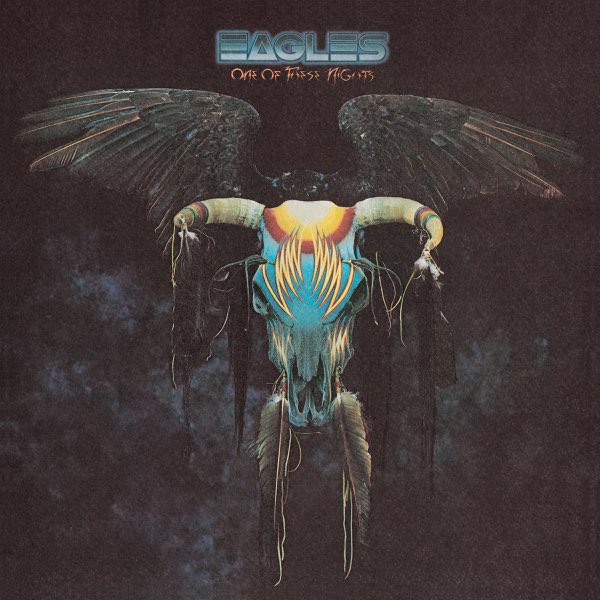 Before the Eagles made “Hotel California” and were deemed terminally uncool by the most annoying rock and roll fans you’ll ever meet, they were a slam-dunk, top-tier commercial act. Everything they made went platinum, each album spawning multiple #1 hits. One of These Nights, their follow-up to 1974’s On the Border, is the last record to feature the band’s original lineup: Don Henley, Glenn Frey, Bernie Leadon, and Randy Meisner. Don Felder had joined the previous year, and Leadon, upset over the band’s pivot from country to chart-friendly rock music, would leave, opening a pathway for Joe Walsh to join in 1976. But One of These Nights is the hero of the Eagles’ catalog, producing three Top 10 singles—the title track, “Lyin’ Eyes,” and “Take It to the Limit”—selling 4 million copies, and winning a Best Pop Performance by a Duo or Group with Vocals Grammy Award. You can hear the Eagles turning into superstars in these songs. The popularity didn’t soil the deep cuts, either: The Felder-sung “Visions” and Frey and Henley’s “After the Thrill is Gone” are mini treasures waiting behind the smoke of “Lyin’ Eyes” and “Take It to the Limit” on side two. —Matt Mitchell
Before the Eagles made “Hotel California” and were deemed terminally uncool by the most annoying rock and roll fans you’ll ever meet, they were a slam-dunk, top-tier commercial act. Everything they made went platinum, each album spawning multiple #1 hits. One of These Nights, their follow-up to 1974’s On the Border, is the last record to feature the band’s original lineup: Don Henley, Glenn Frey, Bernie Leadon, and Randy Meisner. Don Felder had joined the previous year, and Leadon, upset over the band’s pivot from country to chart-friendly rock music, would leave, opening a pathway for Joe Walsh to join in 1976. But One of These Nights is the hero of the Eagles’ catalog, producing three Top 10 singles—the title track, “Lyin’ Eyes,” and “Take It to the Limit”—selling 4 million copies, and winning a Best Pop Performance by a Duo or Group with Vocals Grammy Award. You can hear the Eagles turning into superstars in these songs. The popularity didn’t soil the deep cuts, either: The Felder-sung “Visions” and Frey and Henley’s “After the Thrill is Gone” are mini treasures waiting behind the smoke of “Lyin’ Eyes” and “Take It to the Limit” on side two. —Matt Mitchell
40. Tommy Bolin: Teaser
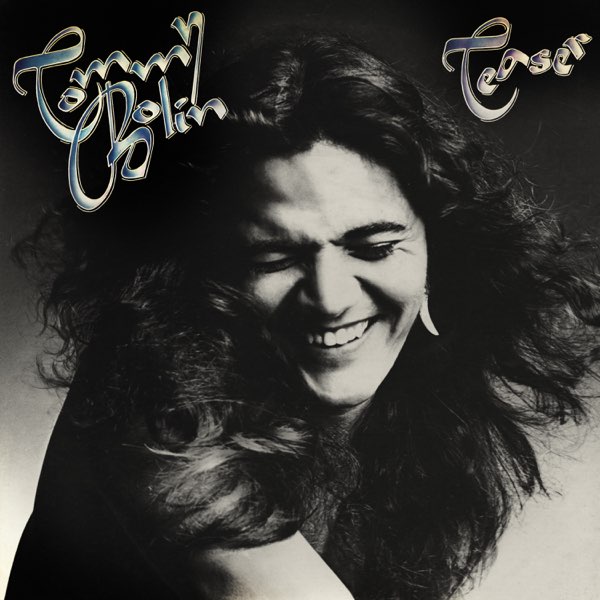 Tommy Bolin accomplished a lot in his 25 years, playing in Zephyr, James Gang, and Deep Purple in a seven-year span up until his death in 1976. Somewhere in there came his debut solo album, Teaser, a record so entrenched in career-spanning influence that its intricacies only get woven so deep. But that’s not a bad thing at all. These songs span realms of hard rock, blues, reggae, Latin music, and jazz, ultimately anchoring into a fast-paced, mostly instrumental spectacle. Horns cut through the solo on “Marching Powder,” a sequence that could go the distance with any moment from any track from any album on this list, and “People, People” and “Lotus” are two complex showcases of Bolin’s picking genius. But he wasn’t all licks and gusto, nor was he merely Ritchie Blackmore’s replacement. His songs had progressive signatures, his slide guitar was deft, and his vocals were proving to be remarkable, to say the least. Just check out the 5-minute “Dreamer,” a superstar-in-the-making effort that could have taken Bolin to the mainstream, had he lived long enough to get there. There’s a reason Van Halen liked to cover “The Grind” so much: You can’t go wrong with a record that whips major ass. —Matt Mitchell
Tommy Bolin accomplished a lot in his 25 years, playing in Zephyr, James Gang, and Deep Purple in a seven-year span up until his death in 1976. Somewhere in there came his debut solo album, Teaser, a record so entrenched in career-spanning influence that its intricacies only get woven so deep. But that’s not a bad thing at all. These songs span realms of hard rock, blues, reggae, Latin music, and jazz, ultimately anchoring into a fast-paced, mostly instrumental spectacle. Horns cut through the solo on “Marching Powder,” a sequence that could go the distance with any moment from any track from any album on this list, and “People, People” and “Lotus” are two complex showcases of Bolin’s picking genius. But he wasn’t all licks and gusto, nor was he merely Ritchie Blackmore’s replacement. His songs had progressive signatures, his slide guitar was deft, and his vocals were proving to be remarkable, to say the least. Just check out the 5-minute “Dreamer,” a superstar-in-the-making effort that could have taken Bolin to the mainstream, had he lived long enough to get there. There’s a reason Van Halen liked to cover “The Grind” so much: You can’t go wrong with a record that whips major ass. —Matt Mitchell
39. Rufus & Chaka Khan: Rufus featuring Chaka Khan
 There’s an argument to be made that the best song from an album on this list is “Sweet Thing.” The lead single from Rufus and Chaka Khan’s fourth album together was a Top 5 hit on the Hot 100 and sold a million copies in the United States, further cementing the group’s legacy—as if Rags to Rufus and Rufusized hadn’t already a year prior. The jazz eccentrics, paired with templates of rock, funk, and soul, made Rufus unconventional titans of the ‘70s, and Khan’s singing offered a deeply emotional, mellow bouy to the band’s disco-minded. Khan was a superstar then, her presence on every track unfathomably transformative, especially when she screams through “Fool’s Paradise.” Thanks to Clare Fischer’s string arrangements and Bobby Watson’s rhythms, “Ooh I Like Your Loving” and “Circles” are bass-minded, symphonic dancefloor favorites, while Tony Maiden’s blistering lead lines on the Bee Gees’ “Jive Talkin’” close the LP out with a warm wealth of aura. —Matt Mitchell
There’s an argument to be made that the best song from an album on this list is “Sweet Thing.” The lead single from Rufus and Chaka Khan’s fourth album together was a Top 5 hit on the Hot 100 and sold a million copies in the United States, further cementing the group’s legacy—as if Rags to Rufus and Rufusized hadn’t already a year prior. The jazz eccentrics, paired with templates of rock, funk, and soul, made Rufus unconventional titans of the ‘70s, and Khan’s singing offered a deeply emotional, mellow bouy to the band’s disco-minded. Khan was a superstar then, her presence on every track unfathomably transformative, especially when she screams through “Fool’s Paradise.” Thanks to Clare Fischer’s string arrangements and Bobby Watson’s rhythms, “Ooh I Like Your Loving” and “Circles” are bass-minded, symphonic dancefloor favorites, while Tony Maiden’s blistering lead lines on the Bee Gees’ “Jive Talkin’” close the LP out with a warm wealth of aura. —Matt Mitchell
38. Black Sabbath: Sabotage
 By 1975, it seemed like Black Sabbath had exhausted itself. The band’s first five records, from the self-titled through Sabbath Bloody Sabbath, were all tremendous, but only the Beatles had ever had six great releases in a row. The expectations were massive, and the interpersonal dynamics were crumbling: Wounded by coke addictions and a long, exhausting legal battle with their management team, Black Sabbath should have burst into flames on Sabotage—the title would have certainly been fitting enough. What ensued became some of the band’s heaviest work, including “Hole in the Sky” and “Megalomania.” This is a record written about, fueled by, and delivered with rage, which makes the synthy, buzzy “Am I Going Insane” a hell of an outlier song. Sabbath’s reign on hard rock would plummet by the time LP7, Technical Ecstasy, hit the shelves a year later, but Sabotage is a living document of four musicians falling apart. The music is eccentric, with metal structures infiltrated often by proggy swells, but every turned corner is disorienting in the strangest ways. —Matt Mitchell
By 1975, it seemed like Black Sabbath had exhausted itself. The band’s first five records, from the self-titled through Sabbath Bloody Sabbath, were all tremendous, but only the Beatles had ever had six great releases in a row. The expectations were massive, and the interpersonal dynamics were crumbling: Wounded by coke addictions and a long, exhausting legal battle with their management team, Black Sabbath should have burst into flames on Sabotage—the title would have certainly been fitting enough. What ensued became some of the band’s heaviest work, including “Hole in the Sky” and “Megalomania.” This is a record written about, fueled by, and delivered with rage, which makes the synthy, buzzy “Am I Going Insane” a hell of an outlier song. Sabbath’s reign on hard rock would plummet by the time LP7, Technical Ecstasy, hit the shelves a year later, but Sabotage is a living document of four musicians falling apart. The music is eccentric, with metal structures infiltrated often by proggy swells, but every turned corner is disorienting in the strangest ways. —Matt Mitchell
37. Paul Simon: Still Crazy After All These Years
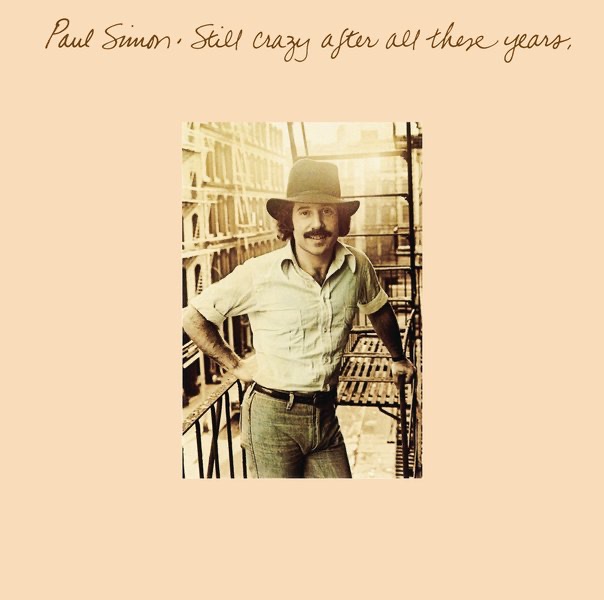 I promise you, Paul Simon’s Still Crazy After All These Years is just as good on the 100th listen. Simon’s post-& Garfunkel solo career began well enough, thanks to hits like “Me & Julio Down By the Schoolyard” and “Kodachrome,” but this is where he finally started cooking for good. Even if he hadn’t made Graceland, an album like this is the type to cement someone’s legacy. Still Crazy After All These Years spawned four Top 40 hits—“50 Ways to Leave Your Lover,” “Gone at Last,” “My Little Town,” and the title track—and won two Grammy Awards, including Album of the Year. I am especially partial to the sublime “My Little Town,” which features vocals from Art Garfunkel and really puts a great punctuation on the “divorce record” vibes of Still Crazy. My only critique of the record is that Simon left “Slip Slidin’ Away” off of it. But him performing the title track in a turkey suit on Saturday Night Live nearly makes up for that mistake. Nearly. —Matt Mitchell
I promise you, Paul Simon’s Still Crazy After All These Years is just as good on the 100th listen. Simon’s post-& Garfunkel solo career began well enough, thanks to hits like “Me & Julio Down By the Schoolyard” and “Kodachrome,” but this is where he finally started cooking for good. Even if he hadn’t made Graceland, an album like this is the type to cement someone’s legacy. Still Crazy After All These Years spawned four Top 40 hits—“50 Ways to Leave Your Lover,” “Gone at Last,” “My Little Town,” and the title track—and won two Grammy Awards, including Album of the Year. I am especially partial to the sublime “My Little Town,” which features vocals from Art Garfunkel and really puts a great punctuation on the “divorce record” vibes of Still Crazy. My only critique of the record is that Simon left “Slip Slidin’ Away” off of it. But him performing the title track in a turkey suit on Saturday Night Live nearly makes up for that mistake. Nearly. —Matt Mitchell
36. ABBA: ABBA
 For some, ABBA’s cultural relevance didn’t begin until Arrival in 1976. But I implore you to turn back your clocks to a year prior and let the goodness of the Swedish quartet’s self-titled album wash over you. It featured seven (!) singles, including “I Do, I Do, I Do, I Do, I Do,” “Mamma Mia,” “I’ve Been Waiting for You,” and “So Long,” all of which are delightfully catchy. But whenever I am asked about my favorite ABBA song, my answer is the same as it’s been since I was a teenager: “SOS,” a composition so inspired by Phil Spector’s Wall of Sound instrumentation and Beach Boy harmonies that it nearly outshines its own reference points. To me, “SOS” marks the moment where ABBA became pop titans. I’m listening to ABBA right now and it’s the greatest album I’ve ever heard. —Matt Mitchell
For some, ABBA’s cultural relevance didn’t begin until Arrival in 1976. But I implore you to turn back your clocks to a year prior and let the goodness of the Swedish quartet’s self-titled album wash over you. It featured seven (!) singles, including “I Do, I Do, I Do, I Do, I Do,” “Mamma Mia,” “I’ve Been Waiting for You,” and “So Long,” all of which are delightfully catchy. But whenever I am asked about my favorite ABBA song, my answer is the same as it’s been since I was a teenager: “SOS,” a composition so inspired by Phil Spector’s Wall of Sound instrumentation and Beach Boy harmonies that it nearly outshines its own reference points. To me, “SOS” marks the moment where ABBA became pop titans. I’m listening to ABBA right now and it’s the greatest album I’ve ever heard. —Matt Mitchell
35. Gary Stewart: Out of Hand
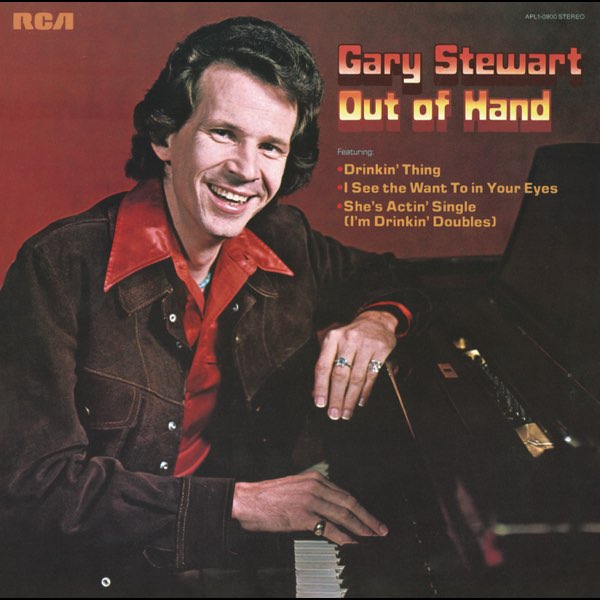 Most Zoomers know of Gary Stewart thanks to Wednesday’s cover of his song “She’s Actin’ Single (I’m Drinkin’ Doubles),” but the Kentucky outlaw rarely gets the respect he deserves. His second LP, Out of Hand, is one of country music’s best efforts in the ‘70s, thanks to Stewart taking clear inspiration from Hank Williams and Jerry Lee Lewis, practicing a rockabilly sound with deadpan wit and honky-tonk bravado. “Drinkin’ Thing” is one of my favorite opening tracks ever, as Stewart, backed by the Jordanaires, mopes through the singalong like a drunken sad-sack clutching the bottle like a lover: “It’s a lonely thing, but it’s the only thing to keep a foolish man in love hangin’ on.” “I See the Want to in Your Eyes” lands closer to the country mainstream, thanks to a wallowing harmonica from Charlie McCoy, and “Back Sliders Wine” and “Sweet Country Red” are raucous bar stalwarts. Stewart, ever the anchoring, smooth-talkin’ shepherd of miserable, punch-drunk bombast, is backed by the damn-good trio of Harold Bradley, David Briggs, and Jerry Carrigan. And, yes, “She’s Actin’ Single,” curling in the color of Pete Drake’s steel guitar, could go 10 rounds with any song from any album on this list. —Matt Mitchell
Most Zoomers know of Gary Stewart thanks to Wednesday’s cover of his song “She’s Actin’ Single (I’m Drinkin’ Doubles),” but the Kentucky outlaw rarely gets the respect he deserves. His second LP, Out of Hand, is one of country music’s best efforts in the ‘70s, thanks to Stewart taking clear inspiration from Hank Williams and Jerry Lee Lewis, practicing a rockabilly sound with deadpan wit and honky-tonk bravado. “Drinkin’ Thing” is one of my favorite opening tracks ever, as Stewart, backed by the Jordanaires, mopes through the singalong like a drunken sad-sack clutching the bottle like a lover: “It’s a lonely thing, but it’s the only thing to keep a foolish man in love hangin’ on.” “I See the Want to in Your Eyes” lands closer to the country mainstream, thanks to a wallowing harmonica from Charlie McCoy, and “Back Sliders Wine” and “Sweet Country Red” are raucous bar stalwarts. Stewart, ever the anchoring, smooth-talkin’ shepherd of miserable, punch-drunk bombast, is backed by the damn-good trio of Harold Bradley, David Briggs, and Jerry Carrigan. And, yes, “She’s Actin’ Single,” curling in the color of Pete Drake’s steel guitar, could go 10 rounds with any song from any album on this list. —Matt Mitchell
34. David Bowie: Young Americans
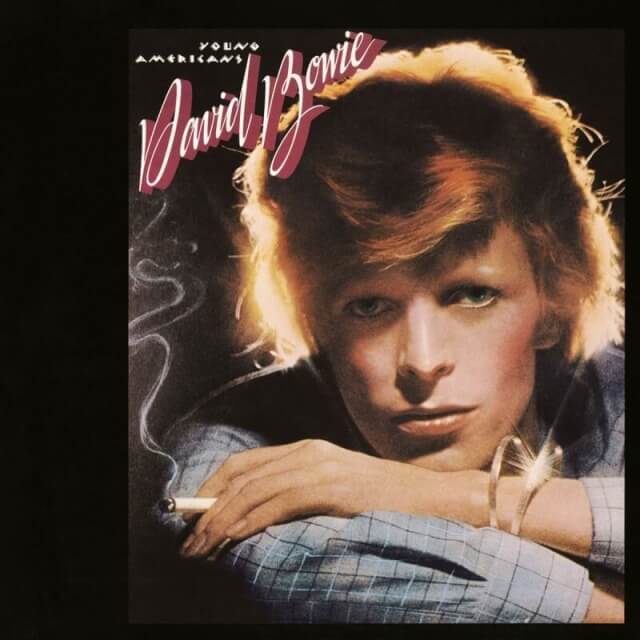 Young Americans is my favorite Bowie album, a strong return to center after the disappointing back-to-back of Pin-Ups and Diamond Dogs. But the latter deserves some praise, if only because its American tour stirred the Thin White Duke into a deep love for Philly soul—though he called it “plastic soul,” fittingly—and he even recorded part of the album at Sigma Sound in the city. Second single “Fame” became Bowie’s first #1 hit on the pop charts and landed him on Soul Train by the end of 1975. Gone was the dystopian, conceptual high-art of his previous albums. Bowie was doing sarcastic, easy-on-the-ears R&B music but with an orange-haired, English pop twist. On “Young Americans,” he asks: “Ain’t there one damn song that can make me break down and cry?” What follows is a pastiche of transitional yet superb reference. The album is pointedly Beatles-coded—not in sound, but in reference. John Lennon sings backup on “Fame,” while Bowie covers “Across the Universe” and his background vocalists, including a young, unknown Luther Vandross, interpolate lyrics from “A Day in the Life” into the title track. In bursts of funk, blue-eyed soul, and punchy disco, Young Americans was the doorway into Bowie’s greatest chapter. —Matt Mitchell
Young Americans is my favorite Bowie album, a strong return to center after the disappointing back-to-back of Pin-Ups and Diamond Dogs. But the latter deserves some praise, if only because its American tour stirred the Thin White Duke into a deep love for Philly soul—though he called it “plastic soul,” fittingly—and he even recorded part of the album at Sigma Sound in the city. Second single “Fame” became Bowie’s first #1 hit on the pop charts and landed him on Soul Train by the end of 1975. Gone was the dystopian, conceptual high-art of his previous albums. Bowie was doing sarcastic, easy-on-the-ears R&B music but with an orange-haired, English pop twist. On “Young Americans,” he asks: “Ain’t there one damn song that can make me break down and cry?” What follows is a pastiche of transitional yet superb reference. The album is pointedly Beatles-coded—not in sound, but in reference. John Lennon sings backup on “Fame,” while Bowie covers “Across the Universe” and his background vocalists, including a young, unknown Luther Vandross, interpolate lyrics from “A Day in the Life” into the title track. In bursts of funk, blue-eyed soul, and punchy disco, Young Americans was the doorway into Bowie’s greatest chapter. —Matt Mitchell
33. The Isley Brothers: The Heat is On
 The 41-minute, multi-part The Heat is On is full of Ernie Isley’s guitar licks, Ronald Isley’s vamps, and the whole family’s onset disco worship. The Isley Brothers stir your soul before melting your face off, thanks to the unpredictable but delightfully smooth veers into funk, rock and roll, and doo-wop. “For the Love of You” is six minutes of sensual, quiet storm R&B, while the anti-authority “Fight the Power” peaked at #4 on the Hot 100 and wound up inspiring Public Enemy’s track of the same name. O’Kelly Isley takes the lead on “Sensuality,” letting his buttery falsetto shape the ballad’s sensible and soft grooves. But the MVP of The Heat is On is Chris Jasper, whose clavinet, Moog, and electric piano shape the backbone of every track. The album went to #1, making the Isley Brothers just the third Black band to do so, after Ohio Players and Earth, Wind & Fire. —Matt Mitchell
The 41-minute, multi-part The Heat is On is full of Ernie Isley’s guitar licks, Ronald Isley’s vamps, and the whole family’s onset disco worship. The Isley Brothers stir your soul before melting your face off, thanks to the unpredictable but delightfully smooth veers into funk, rock and roll, and doo-wop. “For the Love of You” is six minutes of sensual, quiet storm R&B, while the anti-authority “Fight the Power” peaked at #4 on the Hot 100 and wound up inspiring Public Enemy’s track of the same name. O’Kelly Isley takes the lead on “Sensuality,” letting his buttery falsetto shape the ballad’s sensible and soft grooves. But the MVP of The Heat is On is Chris Jasper, whose clavinet, Moog, and electric piano shape the backbone of every track. The album went to #1, making the Isley Brothers just the third Black band to do so, after Ohio Players and Earth, Wind & Fire. —Matt Mitchell
32. Jackie McLean: Jacknife
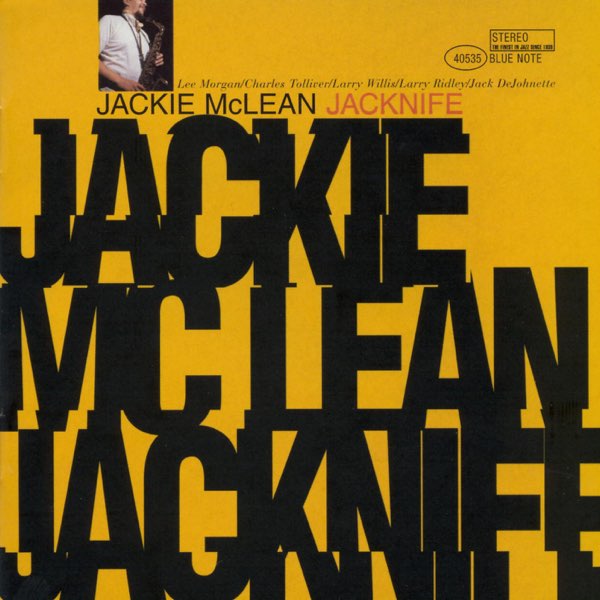 The recordings on Jackie McLean’s Jacknife in 1975 were captured 10 years prior, in two sessions a year apart at the Van Gelder Studio in Englewood Cliffs, NJ. The music was shelved, only to be repackaged as a double-LP by Blue Note. One half of the album features the trio of Lee Morgan, Charles Tolliver, and McLean, while the other half finds a then-33-year-old McLean as the sole horn in focus. But the saxophonist is delivering on some of his best material here, namely during the 12-minute “On the Nile,” which combines Willis’ rapturous piano melody with Tolliver’s warbling trumpet, patched together by McLean’s sax harmony, which conquers the angular “Jacknife” and nurtures the swaying, boppy “Blue Fable.” The horn solos and harmonic piano lines meld often, turning imperfect segments into small miracles. —Matt Mitchell
The recordings on Jackie McLean’s Jacknife in 1975 were captured 10 years prior, in two sessions a year apart at the Van Gelder Studio in Englewood Cliffs, NJ. The music was shelved, only to be repackaged as a double-LP by Blue Note. One half of the album features the trio of Lee Morgan, Charles Tolliver, and McLean, while the other half finds a then-33-year-old McLean as the sole horn in focus. But the saxophonist is delivering on some of his best material here, namely during the 12-minute “On the Nile,” which combines Willis’ rapturous piano melody with Tolliver’s warbling trumpet, patched together by McLean’s sax harmony, which conquers the angular “Jacknife” and nurtures the swaying, boppy “Blue Fable.” The horn solos and harmonic piano lines meld often, turning imperfect segments into small miracles. —Matt Mitchell
31. Thin Lizzy: Fighting
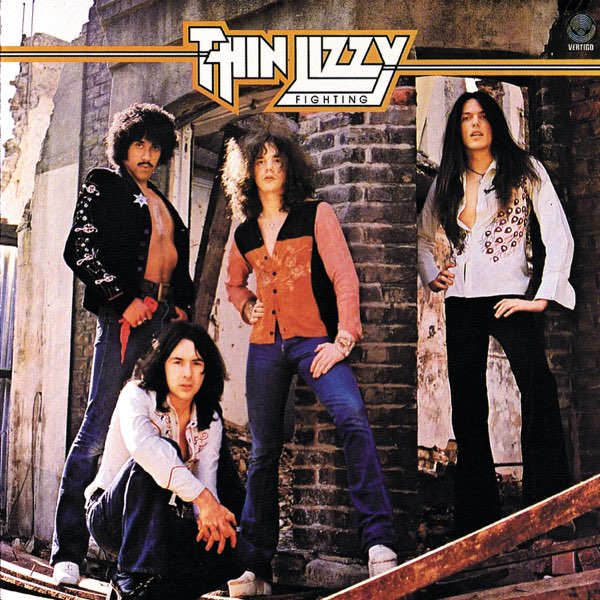 Thin Lizzy’s Jailbreak is forever on hard rock’s syllabus, but the Irish band couldn’t have made it there without first releasing Fighting, their transformative, breakout record. It’s the inaugural installment in a tremendous five-album run, and an introduction to the twin guitars of Scott Gorham and Brian Robertson, who’d join vocalist/bassist/producer Phil Lynott in creating one of the strongest musical menageries of the ‘70s—Thin Lizzy spun the blues into folk music, and they spun folk music into hard rock, and they spun hard rock into pop. You can hear the scuzzy, head-rattling benchmarks that Thin Lizzy would scratch at on “Jailbreak” (“Suicide”), while the band put their own bluesy, metallic spin on East Coast jazz-rock (“For Those Who Live to Love”). The album opens with an epic cover of Bob Seger’s “Rosalie” that mellows out with the terrific “Wild One” lick and boogies up in the Brian Robertson-penned “Silver Dollar.” But what makes Fighting a quintessential 1975 record is “Freedom Song,” Thin Lizzy’s greatest post-“Whiskey in the Jar” effort—a then-radically heroic Black Power protest anthem that emphasized the anti-authoritarian rock and roll foundations of blood, sex, and defiance. It’s as tough and necessary now as it was 50 years ago. —Matt Mitchell
Thin Lizzy’s Jailbreak is forever on hard rock’s syllabus, but the Irish band couldn’t have made it there without first releasing Fighting, their transformative, breakout record. It’s the inaugural installment in a tremendous five-album run, and an introduction to the twin guitars of Scott Gorham and Brian Robertson, who’d join vocalist/bassist/producer Phil Lynott in creating one of the strongest musical menageries of the ‘70s—Thin Lizzy spun the blues into folk music, and they spun folk music into hard rock, and they spun hard rock into pop. You can hear the scuzzy, head-rattling benchmarks that Thin Lizzy would scratch at on “Jailbreak” (“Suicide”), while the band put their own bluesy, metallic spin on East Coast jazz-rock (“For Those Who Live to Love”). The album opens with an epic cover of Bob Seger’s “Rosalie” that mellows out with the terrific “Wild One” lick and boogies up in the Brian Robertson-penned “Silver Dollar.” But what makes Fighting a quintessential 1975 record is “Freedom Song,” Thin Lizzy’s greatest post-“Whiskey in the Jar” effort—a then-radically heroic Black Power protest anthem that emphasized the anti-authoritarian rock and roll foundations of blood, sex, and defiance. It’s as tough and necessary now as it was 50 years ago. —Matt Mitchell
30. The Rocky Horror Picture Show
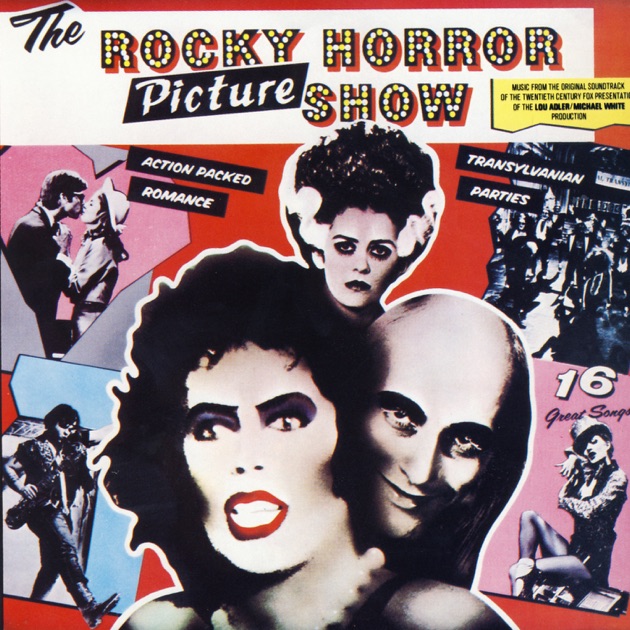 Rocky Horror—the stage show, the film, or the midnight screenings—is not everyone’s cup of fishnets. That’s probably a good thing; as the character Dr. Scott observes, “society must be protected.” (Kiss-ass!) That said, I’ve yet to find a pair of ears that can’t appreciate something in the music. In the early ‘70s, Richard O’Brien cobbled together the simple songs and stock narrative that would become The Rocky Horror Picture Show between gigs as a struggling London actor. He pulled most of the subject matter right from his own boyhood fascinations: rock ‘n’ roll, B-horror movies, comic books, weightlifting magazines and lingerie ads. As a result, Rocky’s songs offer something for almost everyone. The B-movie roll call of “Science Fiction/Double Feature” drips with almost lustful nostalgia for a bygone era of celluloid schlock and movie palaces while “I’m Going Home” pits Frank as our fave fallen alien this side of Bowie. Meat Loaf’s “Hot Patootie” leaves tire tracks down the backs of Elvis and Buddy Holly before skidding into a teen cautionary tale (“Eddie”) befitting a lowdown, cheap, little punk. There’s cornball romance (“Dammit Janet”), sexual awakenings (“Touch-a, Touch-a, Touch-a, Touch Me”) and all the glam decadence your steamy loins can stand as Tim Curry makes the entire galaxy wet on “Sweet Transvestite.” There’s even a faux dance craze that turned out to be, get this, an actual global sensation. (We’re looking at you, Time Warp.) It’s a compilation, nay a simmering cauldron, of familiar sounds, classic themes and juvenilia spiked with some elusive ingredient that empowers even the meekest among us to slip on a wobbly pair of pumps and declare ourselves the baddest bitch in space—or at least the biggest hotdog in the castle. —Matt Melis
Rocky Horror—the stage show, the film, or the midnight screenings—is not everyone’s cup of fishnets. That’s probably a good thing; as the character Dr. Scott observes, “society must be protected.” (Kiss-ass!) That said, I’ve yet to find a pair of ears that can’t appreciate something in the music. In the early ‘70s, Richard O’Brien cobbled together the simple songs and stock narrative that would become The Rocky Horror Picture Show between gigs as a struggling London actor. He pulled most of the subject matter right from his own boyhood fascinations: rock ‘n’ roll, B-horror movies, comic books, weightlifting magazines and lingerie ads. As a result, Rocky’s songs offer something for almost everyone. The B-movie roll call of “Science Fiction/Double Feature” drips with almost lustful nostalgia for a bygone era of celluloid schlock and movie palaces while “I’m Going Home” pits Frank as our fave fallen alien this side of Bowie. Meat Loaf’s “Hot Patootie” leaves tire tracks down the backs of Elvis and Buddy Holly before skidding into a teen cautionary tale (“Eddie”) befitting a lowdown, cheap, little punk. There’s cornball romance (“Dammit Janet”), sexual awakenings (“Touch-a, Touch-a, Touch-a, Touch Me”) and all the glam decadence your steamy loins can stand as Tim Curry makes the entire galaxy wet on “Sweet Transvestite.” There’s even a faux dance craze that turned out to be, get this, an actual global sensation. (We’re looking at you, Time Warp.) It’s a compilation, nay a simmering cauldron, of familiar sounds, classic themes and juvenilia spiked with some elusive ingredient that empowers even the meekest among us to slip on a wobbly pair of pumps and declare ourselves the baddest bitch in space—or at least the biggest hotdog in the castle. —Matt Melis
29. Frank Zappa and The Mothers of Invention: One Size Fits All
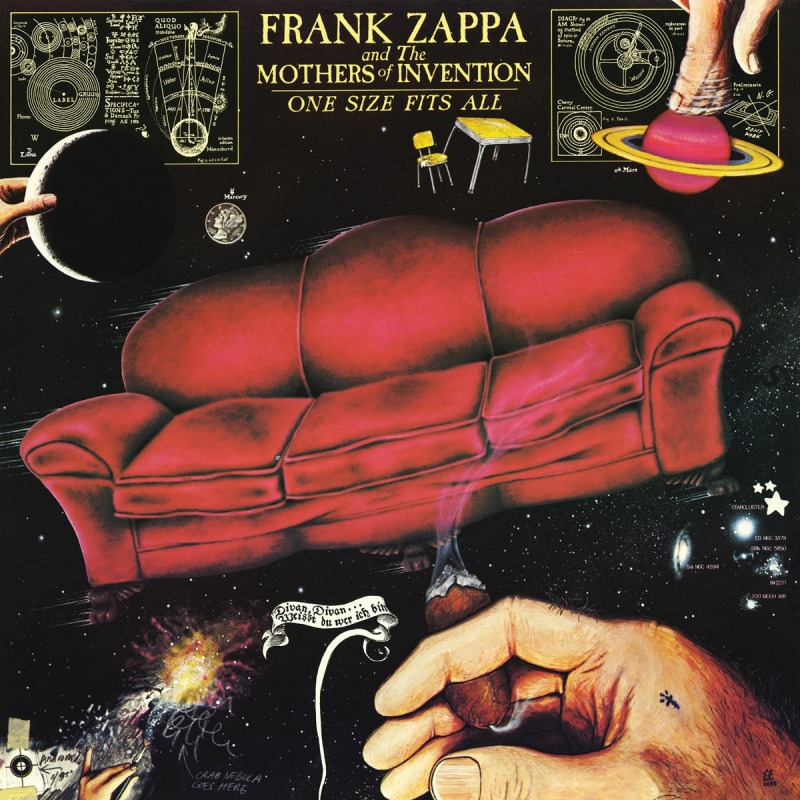 The 14th Mothers of Invention album (and 12th Frank Zappa album) is an all-time meeting of the whacko minds. Seriously, listening to these songs is like frying your brain without drugs. Zappa and his collaborators opted to ditch the suite-minded, symphonic structures of their previous work together by dispersing short, witty tracks in-between the more meandering compositions. The balance works because “Inca Roads” and “Can’t Afford No Shoes” play off each other, just as “Sofa No. 1” dissolves brightly into “Po-Jama People.” But One Size Fits All’s side two is 20 minutes well-spent, thanks to “San Ber’dino” and “Andy,” two 6-minute, gonzo riffs on prog-rock. This is Zappa at his best in the ‘70s—a tall compliment, considering he, the Mothers of Invention, and Captain Beefheart released the also-great Bongo Fury live album just four months later. —Matt Mitchell
The 14th Mothers of Invention album (and 12th Frank Zappa album) is an all-time meeting of the whacko minds. Seriously, listening to these songs is like frying your brain without drugs. Zappa and his collaborators opted to ditch the suite-minded, symphonic structures of their previous work together by dispersing short, witty tracks in-between the more meandering compositions. The balance works because “Inca Roads” and “Can’t Afford No Shoes” play off each other, just as “Sofa No. 1” dissolves brightly into “Po-Jama People.” But One Size Fits All’s side two is 20 minutes well-spent, thanks to “San Ber’dino” and “Andy,” two 6-minute, gonzo riffs on prog-rock. This is Zappa at his best in the ‘70s—a tall compliment, considering he, the Mothers of Invention, and Captain Beefheart released the also-great Bongo Fury live album just four months later. —Matt Mitchell
28. Brian Eno: Another Green World
 Brian Eno’s third solo album is the bridge between his rock beginnings and his ambient trailblazing. On Another Green World, Eno builds warm textures through organ and piano, synthesizers and noise generators, early drum machines, Robert Fripp’s extraterrestrial guitar leads, and even a couple of drum performances by Phil Collins. It’s definitely more minimal than his first two LPs, but it’s far from Music from Airports; there’s still singing on five of its 14 songs, most notably on the beautiful (and oft-covered) pop song “St. Elmo’s Fire” and the swaying trot of “I’ll Come Running,” and instrumentals like “The Big Ship” and “Sombre Reptiles” explore rhythms, melodies, and emotions in structures not too far removed from more conventional pop music. It’s clearly a transitional work that combines the best of Eno’s early era with some of the techniques and ambitions that would come to define him; the songs with vocals are more abstract and experimental than what he accomplished on Here Come the Warm Jets and Taking Tiger Mountain, and you can hear the seeds of Eno’s later work throughout. All in all it’s a foundational classic from a weird era when the mainstream rock world and major labels still had a bit of room for groundbreaking experimentalists. —Garrett Martin
Brian Eno’s third solo album is the bridge between his rock beginnings and his ambient trailblazing. On Another Green World, Eno builds warm textures through organ and piano, synthesizers and noise generators, early drum machines, Robert Fripp’s extraterrestrial guitar leads, and even a couple of drum performances by Phil Collins. It’s definitely more minimal than his first two LPs, but it’s far from Music from Airports; there’s still singing on five of its 14 songs, most notably on the beautiful (and oft-covered) pop song “St. Elmo’s Fire” and the swaying trot of “I’ll Come Running,” and instrumentals like “The Big Ship” and “Sombre Reptiles” explore rhythms, melodies, and emotions in structures not too far removed from more conventional pop music. It’s clearly a transitional work that combines the best of Eno’s early era with some of the techniques and ambitions that would come to define him; the songs with vocals are more abstract and experimental than what he accomplished on Here Come the Warm Jets and Taking Tiger Mountain, and you can hear the seeds of Eno’s later work throughout. All in all it’s a foundational classic from a weird era when the mainstream rock world and major labels still had a bit of room for groundbreaking experimentalists. —Garrett Martin
27. Hako Yamasaki: Tobimasu
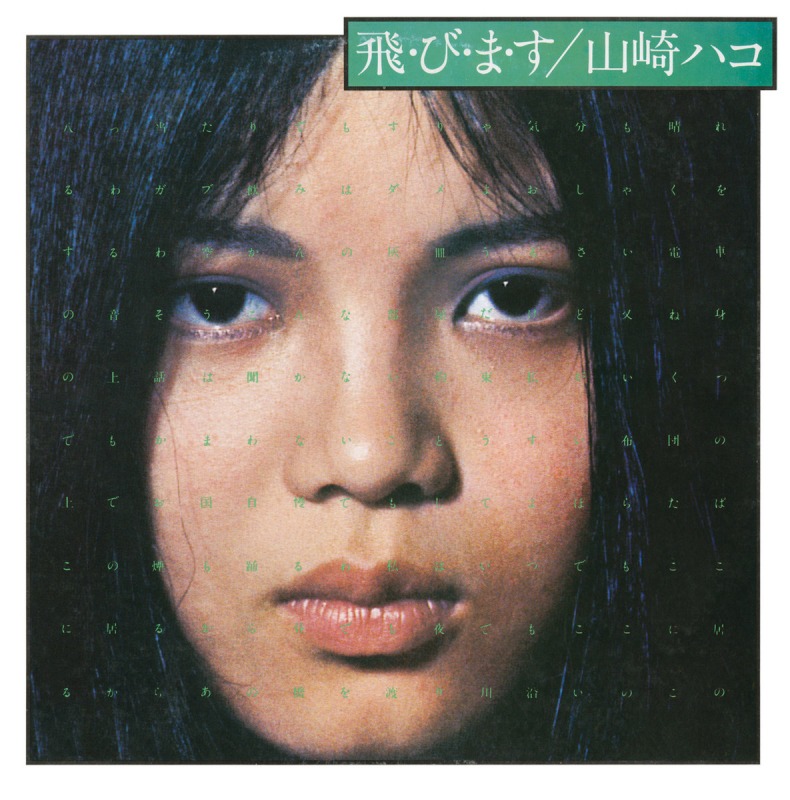 Hako Yamasaki was 18 years old when she made Tobimasu, but her writing has always been wise beyond number. The plucked overcast of “Bōkyō” is Yamasaki’s sentimental introduction where she podiums her drama and aches into memory. “Let’s go back to that house,” she sings, “if only that house existed now.” Her vocals vibrate across palettes of jazz, woodsy pop, and nebulous folk. After the piano-and-bass waltz of “Sasurai,” Hiromi Yasuda strikes an acoustic guitar solo during “Kazaguruma.” Yamasaki’s lyrics are utterly poetic yet plainspoken: “I want to be alone today, everyone, please go somewhere.” Tobimasu is brilliantly arranged, its sequence even more unbelievably wise. The epic and breathy “Kage Ga Mienai” is six minutes of transportive, deeply emotional songcraft; the title track’s melancholy touches into softness. Strings vibrate and her voice grows: “Now, I am leaving on a journey towards the one and only sky. I am beginning to fly.” What a talented musician Yamasaki was from the very beginning. —Matt Mitchell
Hako Yamasaki was 18 years old when she made Tobimasu, but her writing has always been wise beyond number. The plucked overcast of “Bōkyō” is Yamasaki’s sentimental introduction where she podiums her drama and aches into memory. “Let’s go back to that house,” she sings, “if only that house existed now.” Her vocals vibrate across palettes of jazz, woodsy pop, and nebulous folk. After the piano-and-bass waltz of “Sasurai,” Hiromi Yasuda strikes an acoustic guitar solo during “Kazaguruma.” Yamasaki’s lyrics are utterly poetic yet plainspoken: “I want to be alone today, everyone, please go somewhere.” Tobimasu is brilliantly arranged, its sequence even more unbelievably wise. The epic and breathy “Kage Ga Mienai” is six minutes of transportive, deeply emotional songcraft; the title track’s melancholy touches into softness. Strings vibrate and her voice grows: “Now, I am leaving on a journey towards the one and only sky. I am beginning to fly.” What a talented musician Yamasaki was from the very beginning. —Matt Mitchell
26. Fleetwood Mac: Fleetwood Mac
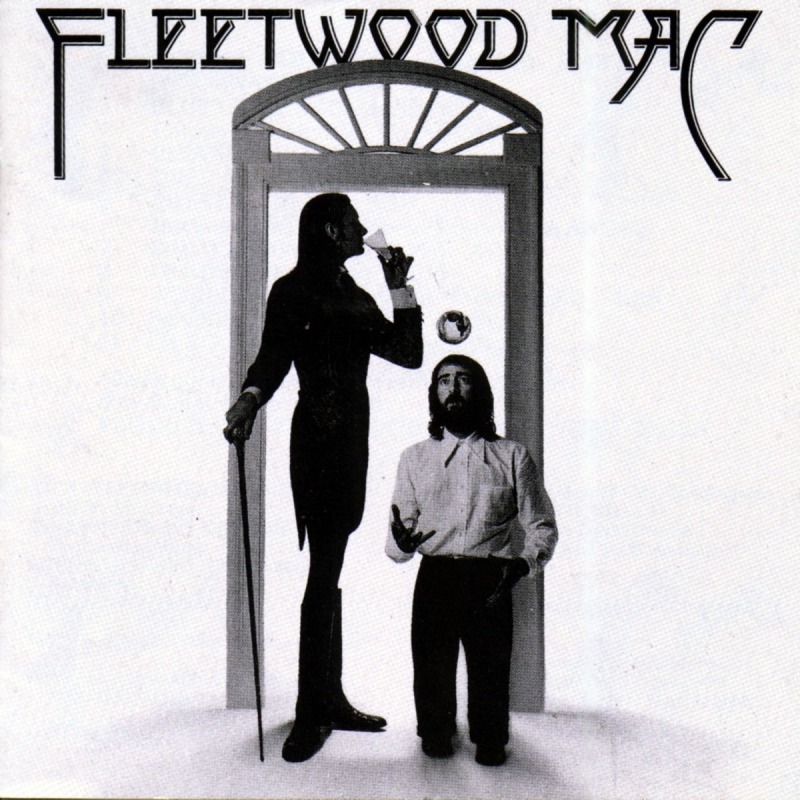 It took Fleetwood Mac 10 tries to make a great album, and all they had to do was slap their full name on the front of it again, seven years after doing it the first time (when Peter Green ran the show). There are moments on Fleetwood Mac that make Rumours look underwhelming, namely Lindsey Buckingham’s chirpy “Monday Morning” and Christine McVie’s greatest effort, the sophisticated trance of “Over My Head” (which was the lead single, a correct choice). But then there is also “Rhiannon.” And “Say You Love Me.” And “Landslide,” a song still making folks ugly weep. At every turn, Fleetwood Mac gets greater. Even the lesser chapters, like “World Turning” and “Crystal,” aren’t skips. The band was well into its career by the time Fleetwood Mac arrived but, thanks to the young additions of American musicians (and lovers) Buckingham and Stevie Nicks, the LP may as well have been considered their debut. And nearly 10 million people bought into it. The band, strictly English for the better part of a decade prior, became incredibly SoCal and ushered the mythologized Laurel Canyon sound into its last overture before the commercial pop of the ‘80s washed it clean out of the mainstream. —Matt Mitchell
It took Fleetwood Mac 10 tries to make a great album, and all they had to do was slap their full name on the front of it again, seven years after doing it the first time (when Peter Green ran the show). There are moments on Fleetwood Mac that make Rumours look underwhelming, namely Lindsey Buckingham’s chirpy “Monday Morning” and Christine McVie’s greatest effort, the sophisticated trance of “Over My Head” (which was the lead single, a correct choice). But then there is also “Rhiannon.” And “Say You Love Me.” And “Landslide,” a song still making folks ugly weep. At every turn, Fleetwood Mac gets greater. Even the lesser chapters, like “World Turning” and “Crystal,” aren’t skips. The band was well into its career by the time Fleetwood Mac arrived but, thanks to the young additions of American musicians (and lovers) Buckingham and Stevie Nicks, the LP may as well have been considered their debut. And nearly 10 million people bought into it. The band, strictly English for the better part of a decade prior, became incredibly SoCal and ushered the mythologized Laurel Canyon sound into its last overture before the commercial pop of the ‘80s washed it clean out of the mainstream. —Matt Mitchell
25. Gilberto Gil & Jorge Ben: Gil e Jorge (Ogum Xangô)
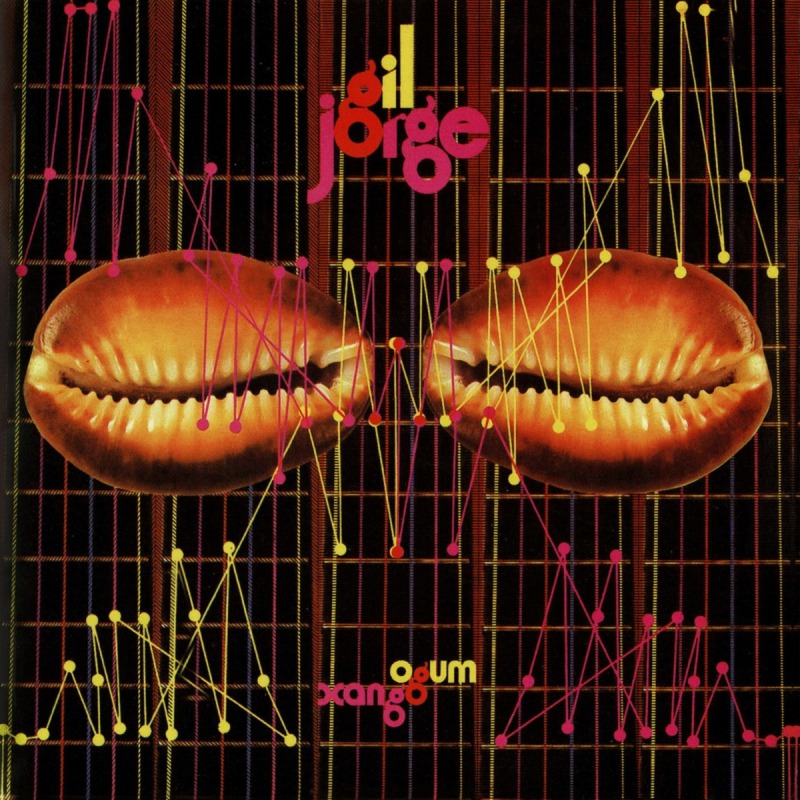 It is rare to hear two of the finest Brazilian musicians come together for a samba masterpiece, but that is what Jorge Ben and Gilberto Gil did in 1975 when they made Gil e Jorge. There’s an argument to be made that this is Gil’s best work, and it’s certainly one of Ben’s strongest performances. The two guitarists were each other’s greatest compliment, as Gil’s spiritual bombast fell right into place in the company of Ben’s soulful balance. Gil e Jorge is a loose, improvisational flow of energy—four men’s bodies remembering the music from within. Voices pitch up like repiniques while Djalma Corrȇa’s bateria and Wagner Dias’ rhythms anchor every song’s jubilance. “Quem Mandou (Pé na Estrada)” may remind Western listeners of the Diamonds’ “Little Darlin’,” while “Taj Mahal” is a guitar revolution packed into 14 minutes. There’s something profoundly courageous in music like this, for how it gestures toward freedom without abandon. Gil and Ben push each other closer to perfection, coming out on the other side with one of the greatest MPB albums of all time. —Matt Mitchell
It is rare to hear two of the finest Brazilian musicians come together for a samba masterpiece, but that is what Jorge Ben and Gilberto Gil did in 1975 when they made Gil e Jorge. There’s an argument to be made that this is Gil’s best work, and it’s certainly one of Ben’s strongest performances. The two guitarists were each other’s greatest compliment, as Gil’s spiritual bombast fell right into place in the company of Ben’s soulful balance. Gil e Jorge is a loose, improvisational flow of energy—four men’s bodies remembering the music from within. Voices pitch up like repiniques while Djalma Corrȇa’s bateria and Wagner Dias’ rhythms anchor every song’s jubilance. “Quem Mandou (Pé na Estrada)” may remind Western listeners of the Diamonds’ “Little Darlin’,” while “Taj Mahal” is a guitar revolution packed into 14 minutes. There’s something profoundly courageous in music like this, for how it gestures toward freedom without abandon. Gil and Ben push each other closer to perfection, coming out on the other side with one of the greatest MPB albums of all time. —Matt Mitchell
24. The Band: Northern Lights-Southern Cross
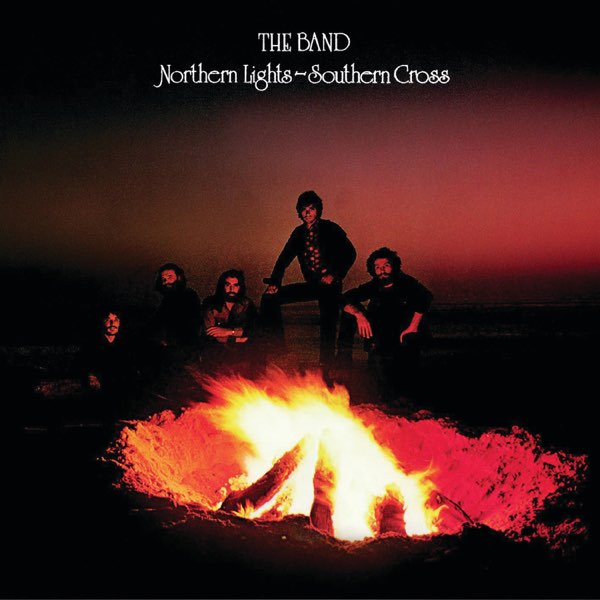 After a run of disappointing releases, the Band reunited with Bob Dylan in 1974 and served as his backing band on Planet Waves and a tour that led to the oft-lauded live album Before the Flood, Robbie Robertson, Levon Helm, Rick Danko, Richard Manuel, and Garth Hudson ditched Big Pink for Shangri-La in Malibu, where they’d make the career-resurrecting Northern Lights – Southern Cross in 1975, their first LP of original material in half-a-decade, all of which was composed by Robertson alone. Thanks to “Acadian Driftwood,” “It Makes No Difference,” and “Jupiter Hollow,” Northern Lights was an ambitious pivot by the Band, as Hudson turned to using synthesizers, but it also was, by most accounts, a commercial failure. It was a goodbye caught on 24-track tape. It’s sugary but tragic, warmed by the nearby Pacific Ocean yet hurt by the fivesome’s nearing finale. There is so much music to be heard, and I feel lucky that the Band made a record like Northern Lights – Southern Cross. Few acts ever get to begin, but the Band got to begin twice. —Matt Mitchell
After a run of disappointing releases, the Band reunited with Bob Dylan in 1974 and served as his backing band on Planet Waves and a tour that led to the oft-lauded live album Before the Flood, Robbie Robertson, Levon Helm, Rick Danko, Richard Manuel, and Garth Hudson ditched Big Pink for Shangri-La in Malibu, where they’d make the career-resurrecting Northern Lights – Southern Cross in 1975, their first LP of original material in half-a-decade, all of which was composed by Robertson alone. Thanks to “Acadian Driftwood,” “It Makes No Difference,” and “Jupiter Hollow,” Northern Lights was an ambitious pivot by the Band, as Hudson turned to using synthesizers, but it also was, by most accounts, a commercial failure. It was a goodbye caught on 24-track tape. It’s sugary but tragic, warmed by the nearby Pacific Ocean yet hurt by the fivesome’s nearing finale. There is so much music to be heard, and I feel lucky that the Band made a record like Northern Lights – Southern Cross. Few acts ever get to begin, but the Band got to begin twice. —Matt Mitchell
23. Led Zeppelin: Physical Graffiti
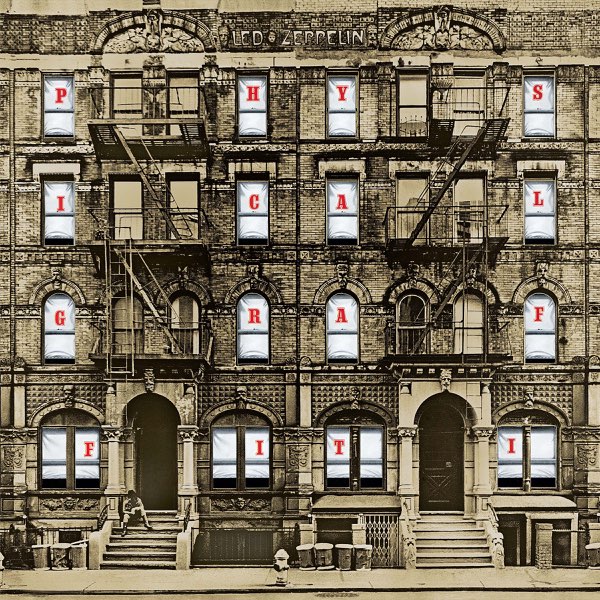 Led Zeppelin’s sixth album is unequivocally their best, and potentially the greatest double-album ever. Physical Graffiti runs a massive 82 minutes in length and commands every bit of your attention. If Robert Plant, Jimmy Page, John Bonham, and John Paul Jones reached the mountaintop on IV, then Physical Graffiti is them lighting the entire peak on fire. Side two may very well be one of the greatest three-song runs in all of rock and roll, as the stretch from “Houses of the Holy” through “Kashmir” is so singular that you couldn’t imagine the record getting better after that—and then the band performs “In the Light,” “Bron-Yr-Aur,” “Down by the Seaside,” and “Ten Years Gone” in a row on side three. The quality of Physical Graffiti is maddening, if only because few rock bands have ever lit such a pronounced match of badassery in such a small vacuum. The album is brutal, symphonic, dense and, at the end of the day, a tour de force of brilliance. Not many records made after 1975 sound this good. —Matt Mitchell
Led Zeppelin’s sixth album is unequivocally their best, and potentially the greatest double-album ever. Physical Graffiti runs a massive 82 minutes in length and commands every bit of your attention. If Robert Plant, Jimmy Page, John Bonham, and John Paul Jones reached the mountaintop on IV, then Physical Graffiti is them lighting the entire peak on fire. Side two may very well be one of the greatest three-song runs in all of rock and roll, as the stretch from “Houses of the Holy” through “Kashmir” is so singular that you couldn’t imagine the record getting better after that—and then the band performs “In the Light,” “Bron-Yr-Aur,” “Down by the Seaside,” and “Ten Years Gone” in a row on side three. The quality of Physical Graffiti is maddening, if only because few rock bands have ever lit such a pronounced match of badassery in such a small vacuum. The album is brutal, symphonic, dense and, at the end of the day, a tour de force of brilliance. Not many records made after 1975 sound this good. —Matt Mitchell
22. Guy Clark: Old No. 1
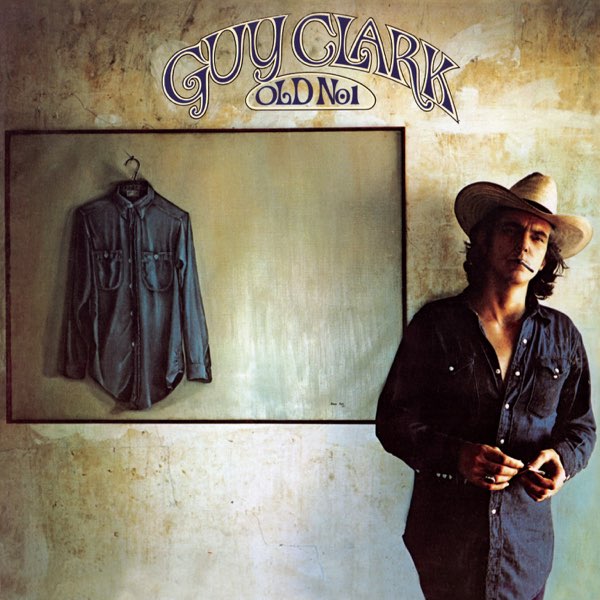 Until his mid-30s, Guy Clark was a Houston boy playing a part in the city’s folk music movement. But when he and his wife Susanna moved to Nashville at the dawn of the ‘70s, Clark, who’d mentored the likes of Steve Earle and Rodney Crowell, went into RCA Studio B and recorded his debut album, Old No. 1. Simply put, it’s the greatest country debut of all time, thanks to tracks like “Texas – 1947” and “Desperados Waiting for a Train,” both of which usher in the record’s melancholic side two. But three minutes into Old No. 1 lies Clark’s magnum opus: “L.A. Freeway.” In the melody rings a Southern orchestra, thanks to Johnny Gimble’s fiddle and Mickey Raphael’s harmonica. Crowell and Earle join Emmylou Harris, Sammi Smith, Gary B. White, Lea Jane Berinati, and Florence Warner for backing harmonies, sending Clark on his way like a crowd hollering on the sides of a parade. “Love’s a gift that’s surely handmade,” he sings to Susanna. “We got somethin’ to believe in, don’t you think it’s time we’re leavin’?” —Matt Mitchell
Until his mid-30s, Guy Clark was a Houston boy playing a part in the city’s folk music movement. But when he and his wife Susanna moved to Nashville at the dawn of the ‘70s, Clark, who’d mentored the likes of Steve Earle and Rodney Crowell, went into RCA Studio B and recorded his debut album, Old No. 1. Simply put, it’s the greatest country debut of all time, thanks to tracks like “Texas – 1947” and “Desperados Waiting for a Train,” both of which usher in the record’s melancholic side two. But three minutes into Old No. 1 lies Clark’s magnum opus: “L.A. Freeway.” In the melody rings a Southern orchestra, thanks to Johnny Gimble’s fiddle and Mickey Raphael’s harmonica. Crowell and Earle join Emmylou Harris, Sammi Smith, Gary B. White, Lea Jane Berinati, and Florence Warner for backing harmonies, sending Clark on his way like a crowd hollering on the sides of a parade. “Love’s a gift that’s surely handmade,” he sings to Susanna. “We got somethin’ to believe in, don’t you think it’s time we’re leavin’?” —Matt Mitchell
21. Pink Floyd: Wish You Were Here
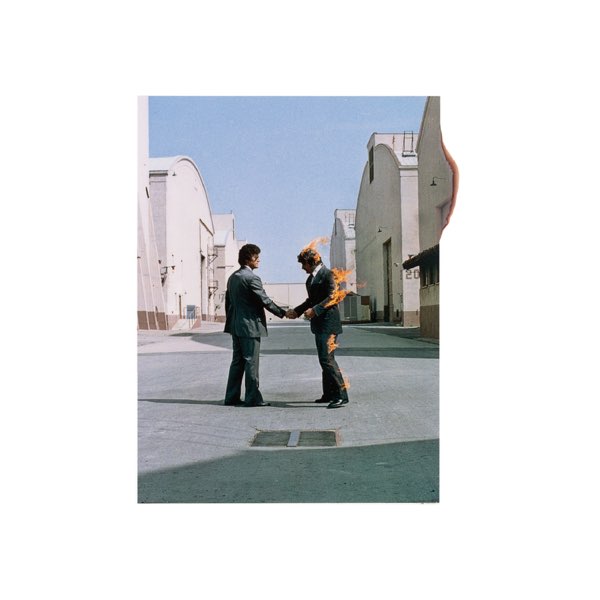 Worthy of its praise for the longevity and limitless perfection of the title track alone, Wish You Were Here is the dense, damning love letter to Syd Barrett that the rest of Pink Floyd took seven years to write and record after the frontman’s departure. So few tributes in rock and roll have ever been so generous, and the scope of Wish You Were Here reaches much farther than that—as the band tackles alienation and music criticism in ways that were much more complex than anything they’d ever written about before. The centerpiece of the record is the nine-part “Shine On You Crazy Diamond,” which was cut in half and positioned as the opening track on side one and the closing track on side two. “You were caught in the crossfire of childhood and stardom, blown on the steel breeze. Come on, your target for faraway laughter. Come on you stranger, you legend, you martyr, and shine! You reached for the secret too soon, you cried for the moon” is, maybe (definitely), the greatest lyrical sequence in the band’s entire history, as Waters honors Barrett in such an empathetic and celebratory way, you’d think the estranged bandleader had been on 10 Pink Floyd records before then and not just one-and-a-half. Wish You Were Here stands the test of time because it dared to defy time itself—yet it’s so grounded in realism and familiarity that it floats just above us always. —Matt Mitchell
Worthy of its praise for the longevity and limitless perfection of the title track alone, Wish You Were Here is the dense, damning love letter to Syd Barrett that the rest of Pink Floyd took seven years to write and record after the frontman’s departure. So few tributes in rock and roll have ever been so generous, and the scope of Wish You Were Here reaches much farther than that—as the band tackles alienation and music criticism in ways that were much more complex than anything they’d ever written about before. The centerpiece of the record is the nine-part “Shine On You Crazy Diamond,” which was cut in half and positioned as the opening track on side one and the closing track on side two. “You were caught in the crossfire of childhood and stardom, blown on the steel breeze. Come on, your target for faraway laughter. Come on you stranger, you legend, you martyr, and shine! You reached for the secret too soon, you cried for the moon” is, maybe (definitely), the greatest lyrical sequence in the band’s entire history, as Waters honors Barrett in such an empathetic and celebratory way, you’d think the estranged bandleader had been on 10 Pink Floyd records before then and not just one-and-a-half. Wish You Were Here stands the test of time because it dared to defy time itself—yet it’s so grounded in realism and familiarity that it floats just above us always. —Matt Mitchell
20. Tony Bennett & Bill Evans: The Tony Bennett / Bill Evans Album
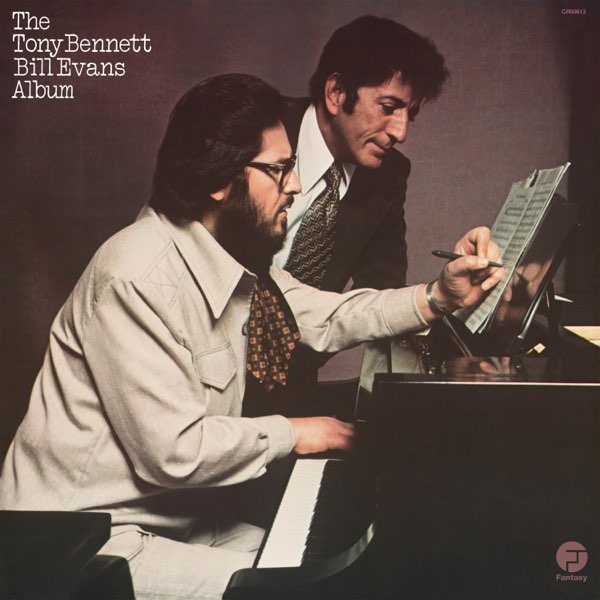 Recorded in a Berkeley studio over four days in June 1975, Tony Bennett and Bill Evans’ collaborative album is a document of two musicians, at the peak of their respective powers, exceptionally falling into one another. Bennett, who’d been making uptempo, rock-tinged pop records during the decade’s first half, was without a record contract yet Evans, ever the maestro of European classicism, pulled fine drama out of the singer. There are no bells and whistles present, no overproduction or funny attitudes—just Bennett’s room-clearing croon and Evans’ idiosyncratic piano playing. Performing standards—like Bernstein’s “Some Other Time,” Ray Noble’s “The Touch of Your Lips,” and Mancini/Mercer’s “Days of Wine and Roses”—this record could pass as a happy accident, as peers riffing on the songbooks in their back pockets. But that would be a misinterpretation of just how great this music is, how their talents rarely contrast. The work is simple yet definitive—a paintbrush dragging picture-perfect techniques across the margins of deeply personal interpretations. For 35 minutes, Bennett and Evans speak a language no one else can. —Matt Mitchell
Recorded in a Berkeley studio over four days in June 1975, Tony Bennett and Bill Evans’ collaborative album is a document of two musicians, at the peak of their respective powers, exceptionally falling into one another. Bennett, who’d been making uptempo, rock-tinged pop records during the decade’s first half, was without a record contract yet Evans, ever the maestro of European classicism, pulled fine drama out of the singer. There are no bells and whistles present, no overproduction or funny attitudes—just Bennett’s room-clearing croon and Evans’ idiosyncratic piano playing. Performing standards—like Bernstein’s “Some Other Time,” Ray Noble’s “The Touch of Your Lips,” and Mancini/Mercer’s “Days of Wine and Roses”—this record could pass as a happy accident, as peers riffing on the songbooks in their back pockets. But that would be a misinterpretation of just how great this music is, how their talents rarely contrast. The work is simple yet definitive—a paintbrush dragging picture-perfect techniques across the margins of deeply personal interpretations. For 35 minutes, Bennett and Evans speak a language no one else can. —Matt Mitchell
19. Terry Allen: Juarez
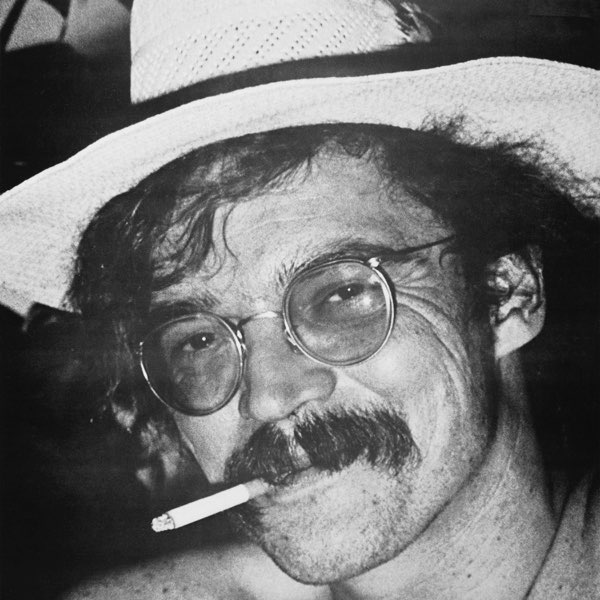 Terry Allen was 32 years old when he made his debut album, Juarez, a song cycle about the Aztecs, cheap sex, and gun-toting at the Rio Grande border. In 1975, fellow Texan Willie Nelson wrote up a song cycle of his own, the oft-lauded (and rightfully so) Red Headed Stranger, but I find myself returning to Allen’s piano portrait of Western, “Texican badman” redolence more as I grow older. He’s channeling John Prine more than Waylon Jennings, and there’s a spritz of Randy Newman in the cynicism, too. And the way he breaks into the stories, like a narrator delivering necessary, scene-splitting exposition, is reliably theatric but never exhausting. The leaving Los Angeles song “Cortez Sail” is especially profound with cinematic vignettes: “See how the lightning makes cracks in your air, tearing the clouds then closin’ the tear,” Allen sings out. “Yeah, but you’re not surprised anymore. You’re going home to Paradise.” Elsewhere, images of pachuco queens, TV glows in-between toes, skinny bodies slipping like knives into perfume, anal with whipped cream, a captain drunk with a “Gypsy bitch,” and border girls with body curls litter the outlaw’s highway on “Border Palace,” “What of Alicia,” “The Run South,” and “Four Corners.” There are corny measures on Juarez, but much of Allen’s writing depends on the humorous, vulgar truths of humanity at-large. “I scribbled down some of the mysteries and I stopped that howling wind,” he sings on “Writing on Rocks Across the U.S.A.” The characters of Juarez are as in love as they are enigmatic. Today’s rainbow certainly is tomorrow’s tamale. —Matt Mitchell
Terry Allen was 32 years old when he made his debut album, Juarez, a song cycle about the Aztecs, cheap sex, and gun-toting at the Rio Grande border. In 1975, fellow Texan Willie Nelson wrote up a song cycle of his own, the oft-lauded (and rightfully so) Red Headed Stranger, but I find myself returning to Allen’s piano portrait of Western, “Texican badman” redolence more as I grow older. He’s channeling John Prine more than Waylon Jennings, and there’s a spritz of Randy Newman in the cynicism, too. And the way he breaks into the stories, like a narrator delivering necessary, scene-splitting exposition, is reliably theatric but never exhausting. The leaving Los Angeles song “Cortez Sail” is especially profound with cinematic vignettes: “See how the lightning makes cracks in your air, tearing the clouds then closin’ the tear,” Allen sings out. “Yeah, but you’re not surprised anymore. You’re going home to Paradise.” Elsewhere, images of pachuco queens, TV glows in-between toes, skinny bodies slipping like knives into perfume, anal with whipped cream, a captain drunk with a “Gypsy bitch,” and border girls with body curls litter the outlaw’s highway on “Border Palace,” “What of Alicia,” “The Run South,” and “Four Corners.” There are corny measures on Juarez, but much of Allen’s writing depends on the humorous, vulgar truths of humanity at-large. “I scribbled down some of the mysteries and I stopped that howling wind,” he sings on “Writing on Rocks Across the U.S.A.” The characters of Juarez are as in love as they are enigmatic. Today’s rainbow certainly is tomorrow’s tamale. —Matt Mitchell
18. Neil Young: Tonight’s the Night
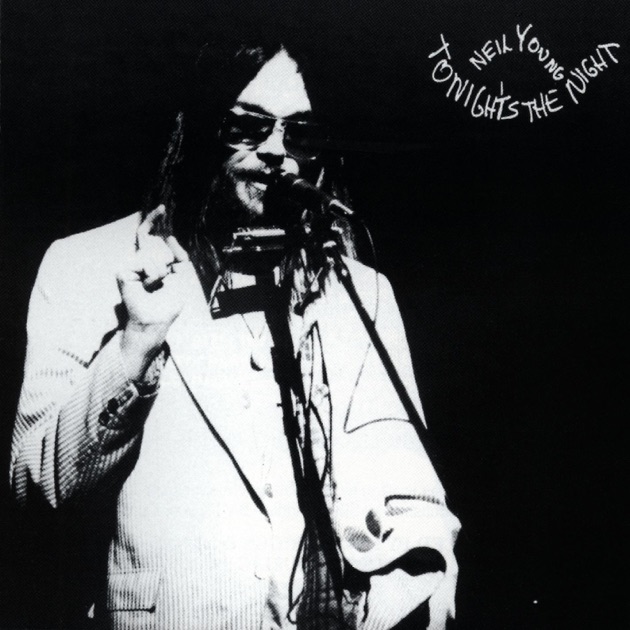 I don’t remember when I discovered Tonight’s the Night, nor do I remember how listening to it for the first time made me feel. I’m sure I was put off by its deliberately jagged instrumentation and Young’s heightened, piercing, nasally vocals. When I began to use his work as a vessel for my own closure with deaths that have lingered with me for years, I found “Tired Eyes” and “Mellow My Mind” and “Speakin’ Out”—songs that had the space to hold all of the suffering I couldn’t spare to carry anymore. And after getting shelved for two years after it was written and recorded, Tonight’s the Night got released in 1975 and was, immediately, unlike anything else Young had ever made up until that point. Fans understand it to be a record heavily influenced by the deaths of two men, roadie Bruce Berry and guitarist Danny Whitten. Nils Lofgren calls the album a “wake for all our heroes and friends that started dying.” The layout of Tonight’s the Night was extraordinary, because Young and David Briggs wanted it to be an “anti-production record” where the focus became, in modern terms, an exercise in following vibes. For casual fans of Young’s work, Tonight’s the Night arrives much rawer and looser than anything else he’d made up until that point. And that was the intention from the jump. —Matt Mitchell
I don’t remember when I discovered Tonight’s the Night, nor do I remember how listening to it for the first time made me feel. I’m sure I was put off by its deliberately jagged instrumentation and Young’s heightened, piercing, nasally vocals. When I began to use his work as a vessel for my own closure with deaths that have lingered with me for years, I found “Tired Eyes” and “Mellow My Mind” and “Speakin’ Out”—songs that had the space to hold all of the suffering I couldn’t spare to carry anymore. And after getting shelved for two years after it was written and recorded, Tonight’s the Night got released in 1975 and was, immediately, unlike anything else Young had ever made up until that point. Fans understand it to be a record heavily influenced by the deaths of two men, roadie Bruce Berry and guitarist Danny Whitten. Nils Lofgren calls the album a “wake for all our heroes and friends that started dying.” The layout of Tonight’s the Night was extraordinary, because Young and David Briggs wanted it to be an “anti-production record” where the focus became, in modern terms, an exercise in following vibes. For casual fans of Young’s work, Tonight’s the Night arrives much rawer and looser than anything else he’d made up until that point. And that was the intention from the jump. —Matt Mitchell
17. Waylon Jennings: Dreaming My Dreams
 Even as a badass outlaw country star, Waylon Jennings could still bring the romance—and he proved as much with his 1975 LP, Dreaming My Dreams. Already 22 albums into his career, Dreaming My Dreams was the first record of Jennings’ to hit #1. He brought the swooning adoration in his love songs and tributes to his country music forefathers, like Hank Williams, Roger Miller, and Bob Wills, while making biting commentary on the genre. It’s emotional, sentimental and captivating, all while maintaining that rugged edge that made the Texan cowboy so lovable in the first place. —Olivia Abercrombie
Even as a badass outlaw country star, Waylon Jennings could still bring the romance—and he proved as much with his 1975 LP, Dreaming My Dreams. Already 22 albums into his career, Dreaming My Dreams was the first record of Jennings’ to hit #1. He brought the swooning adoration in his love songs and tributes to his country music forefathers, like Hank Williams, Roger Miller, and Bob Wills, while making biting commentary on the genre. It’s emotional, sentimental and captivating, all while maintaining that rugged edge that made the Texan cowboy so lovable in the first place. —Olivia Abercrombie
16. Betty Davis: Nasty Gal
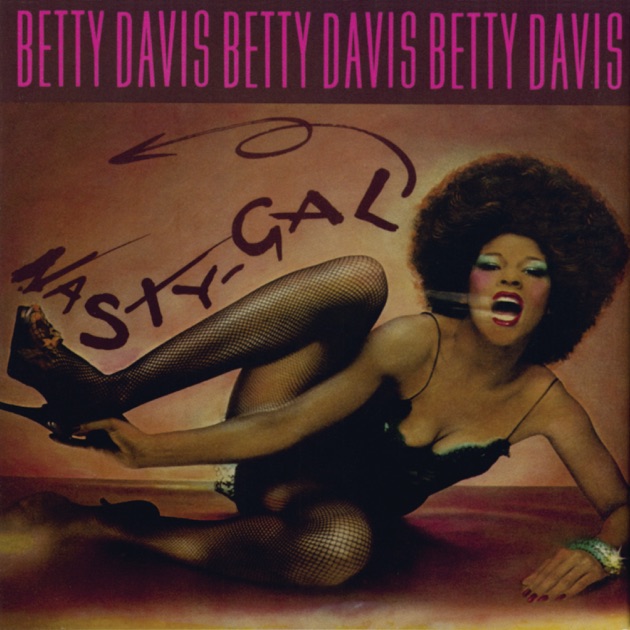 Betty Davis self-produced her all-time great 1974 album They Say I’m Different, but its follow-up, Nasty Gal, was a commercial failure upon arrival—a blow so devastating that Island Records canned Davis’ next record, Is It Love or Desire?, for more than 30 years. Critics weren’t high on Davis’ third album either, but retrospect has allowed for the listening world to properly catch up. The legacy that often follows Davis is that she was ahead of her time, and Nasty Gal certainly is a primitive release for funk music. But these 10 songs aren’t about risks, they’re about Davis mastering her space-age, soul-deep getup and grooves. On “Talkin Trash,” Carlos Morales’ riffs scorch the earth, while Gil Evans’ arrangement on “You and I,” which Betty co-wrote with her ex-husband Miles Davis, is an outlier ballad that illustrates just how capricious her sound could be. “Getting Kicked Off, Havin Fun” turns into a funhouse mirror with Larry Johnson’s gnarly bass notes, while the on-the-nose, body-punishing “F.U.N.K.” name-drops Stevie Wonder, Tina Turner, Al Green, Anne Peebles, Barry White, Jimi Hendrix, Aretha Franklin, Chaka Khan, and others, presenting itself like a museum of Black art: “I was born with it, I will die with it, because it’s in my blood and I can’t get enough.” Nasty Gal is psychedelic and, as the title concurs, plain nasty in the heaviest, coolest sense. It rarely conforms yet displays a great balance of sexuality, agency, and gentleness. —Matt Mitchell
Betty Davis self-produced her all-time great 1974 album They Say I’m Different, but its follow-up, Nasty Gal, was a commercial failure upon arrival—a blow so devastating that Island Records canned Davis’ next record, Is It Love or Desire?, for more than 30 years. Critics weren’t high on Davis’ third album either, but retrospect has allowed for the listening world to properly catch up. The legacy that often follows Davis is that she was ahead of her time, and Nasty Gal certainly is a primitive release for funk music. But these 10 songs aren’t about risks, they’re about Davis mastering her space-age, soul-deep getup and grooves. On “Talkin Trash,” Carlos Morales’ riffs scorch the earth, while Gil Evans’ arrangement on “You and I,” which Betty co-wrote with her ex-husband Miles Davis, is an outlier ballad that illustrates just how capricious her sound could be. “Getting Kicked Off, Havin Fun” turns into a funhouse mirror with Larry Johnson’s gnarly bass notes, while the on-the-nose, body-punishing “F.U.N.K.” name-drops Stevie Wonder, Tina Turner, Al Green, Anne Peebles, Barry White, Jimi Hendrix, Aretha Franklin, Chaka Khan, and others, presenting itself like a museum of Black art: “I was born with it, I will die with it, because it’s in my blood and I can’t get enough.” Nasty Gal is psychedelic and, as the title concurs, plain nasty in the heaviest, coolest sense. It rarely conforms yet displays a great balance of sexuality, agency, and gentleness. —Matt Mitchell
15. Doc Watson: Memories
 Doc Watson, the Deep Gap-born Carolinian who was in the bluegrass vanguard in the 1960s, released his greatest solo record in 1975. Memories was a folk exhibition of Watson originals and traditional interpretations, as the fingerpicker spends 61 minutes repurposing the songs of Bill Halley, Bill Monroe, Jimmie Rodgers, Don Gibson, A.P. Carter, and his son, Merle Watson. But Watson’s own writing, heard on “Rambling Hobo” and “Peartree,” are earnest and weathered. The acapella “Wake Up, Little Maggie” sounds like nothing else on this list. Memories is historical and true to its title, as if Watson thumbed through the songbook by his side and someone recorded him practicing. Just listen to the front-porch singalong “Keep On the Sunny Side.” Those are harmonies that sound like home. —Matt Mitchell
Doc Watson, the Deep Gap-born Carolinian who was in the bluegrass vanguard in the 1960s, released his greatest solo record in 1975. Memories was a folk exhibition of Watson originals and traditional interpretations, as the fingerpicker spends 61 minutes repurposing the songs of Bill Halley, Bill Monroe, Jimmie Rodgers, Don Gibson, A.P. Carter, and his son, Merle Watson. But Watson’s own writing, heard on “Rambling Hobo” and “Peartree,” are earnest and weathered. The acapella “Wake Up, Little Maggie” sounds like nothing else on this list. Memories is historical and true to its title, as if Watson thumbed through the songbook by his side and someone recorded him practicing. Just listen to the front-porch singalong “Keep On the Sunny Side.” Those are harmonies that sound like home. —Matt Mitchell
14. Parliament: Mothership Connection
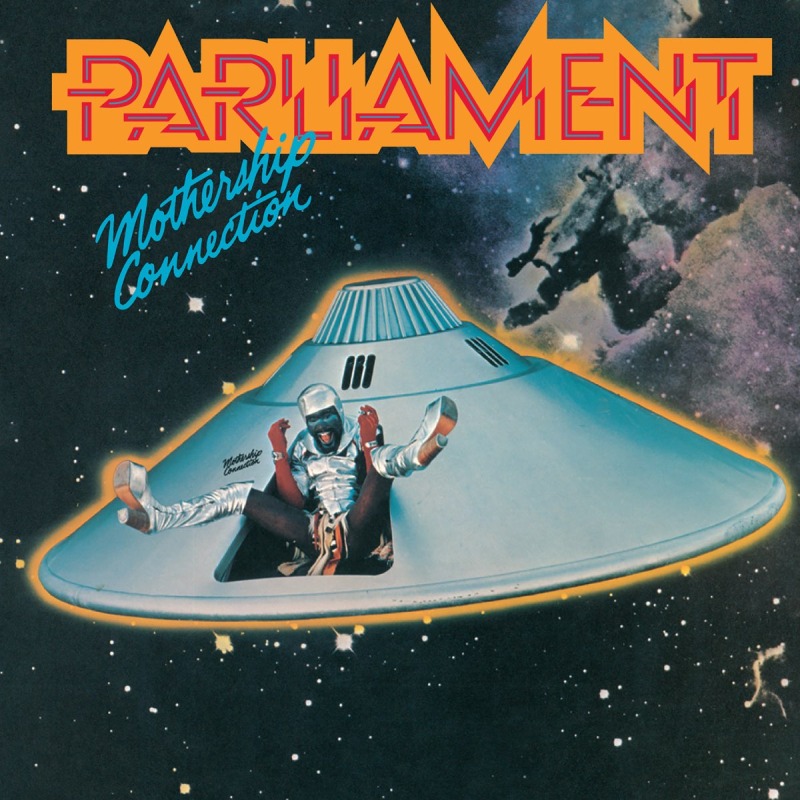 Between Chocolate City and Mothership Connection, Parliament’s 1975 was on fire, as the latter record went platinum in the United States and totally solidified George Clinton as funk’s greatest steward. Mothership Connection is irrefutably a pioneering work in Afrofuturism, as Parliament sing about Black astronauts in alien worlds, the “Chocolate Milky Way.” Frasier McAlpine wrote, “As a reaction to an increasingly fraught 1970s urban environment in which African-American communities faced the end of the optimism of the Civil Rights era, this flamboyant imagination (and let’s be frank, exceptional funkiness) was both righteous and joyful.” A funk record as inspired by Clinton’s own Parliament-Funkadelic lore as it was 2001: A Space Odyssey and Sgt. Pepper’s Lonely Hearts Club Band, “Give Up the Funk (Tear the Roof off the Sucker)” rightfully became a pillar of the funk genre while the Clinton-Collins-Worrell tracks “P. Funk (Wants to Get Funked Up)” and “Mothership Connection (Star Child)” are full of jazz-soaked, cosmic slang. If you want to hear a band cloaked in oneness, Mothership Connection is a high-art, conceptual masterpiece that altered the templates of pop and rap music in the following decades. —Matt Mitchell
Between Chocolate City and Mothership Connection, Parliament’s 1975 was on fire, as the latter record went platinum in the United States and totally solidified George Clinton as funk’s greatest steward. Mothership Connection is irrefutably a pioneering work in Afrofuturism, as Parliament sing about Black astronauts in alien worlds, the “Chocolate Milky Way.” Frasier McAlpine wrote, “As a reaction to an increasingly fraught 1970s urban environment in which African-American communities faced the end of the optimism of the Civil Rights era, this flamboyant imagination (and let’s be frank, exceptional funkiness) was both righteous and joyful.” A funk record as inspired by Clinton’s own Parliament-Funkadelic lore as it was 2001: A Space Odyssey and Sgt. Pepper’s Lonely Hearts Club Band, “Give Up the Funk (Tear the Roof off the Sucker)” rightfully became a pillar of the funk genre while the Clinton-Collins-Worrell tracks “P. Funk (Wants to Get Funked Up)” and “Mothership Connection (Star Child)” are full of jazz-soaked, cosmic slang. If you want to hear a band cloaked in oneness, Mothership Connection is a high-art, conceptual masterpiece that altered the templates of pop and rap music in the following decades. —Matt Mitchell
13. Willie Nelson: Red Headed Stranger
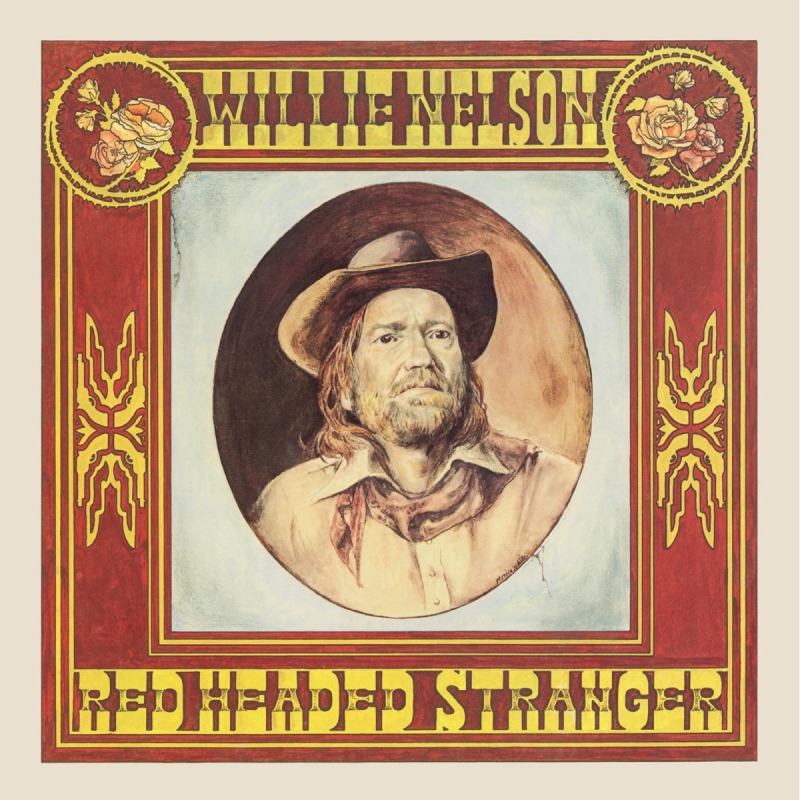 When Willie Nelson turned in his 18th album, executives at his label famously thought the unadorned songs were a collection of demos. Nope. Nelson did a complete about-face from the lush musical arrangements then dominated Nashville with a concept album full of skeletal songs mostly featuring guitar, drums, piano, and harmonica. It was a smash hit. An essential entry in the outlaw country canon, Red Headed Stranger turned a moderately successful recording artist into a huge star. The album went double-platinum, crossing over onto the mainstream music charts and making Nelson one of the few country artists with an ardent following among rednecks and hippies. Nelson’s 57 solo albums (and more than a few collaborations) since then have included plenty of gems, but none have outshined Red Headed Stranger. —Eric R. Danton
When Willie Nelson turned in his 18th album, executives at his label famously thought the unadorned songs were a collection of demos. Nope. Nelson did a complete about-face from the lush musical arrangements then dominated Nashville with a concept album full of skeletal songs mostly featuring guitar, drums, piano, and harmonica. It was a smash hit. An essential entry in the outlaw country canon, Red Headed Stranger turned a moderately successful recording artist into a huge star. The album went double-platinum, crossing over onto the mainstream music charts and making Nelson one of the few country artists with an ardent following among rednecks and hippies. Nelson’s 57 solo albums (and more than a few collaborations) since then have included plenty of gems, but none have outshined Red Headed Stranger. —Eric R. Danton
12. Rita Lee & Tutti Frutti: Fruto proibido
 Considering how Brazilian musician Rita Lee tapped Alice Cooper engineer Andy Mills to produce Fruto proibido, it should come as no surprise that the virtuoso multi-instrumentalist and vocalist was able to settle into the rockstar role without a flinch. Lee had been a member of Os Mutantes before going solo, but her fourth solo album was a dramatic, raunchy monument to a rowdiness she’d leave behind for dance music by the end of the ‘70s. But in high-ball combos of glam- and psych-rock, Lee sang of family strife, empowerment, and closure, often in sarcastic, youthful inflections. The title track alone is a raucous and rollicking brew of acoustic rambles and the twang of Luis Sérgio Carlini’s harmonica. Or take “Dançar Pra Não Dançar” and its scorched-earth guitar saga, which gives way to a sultry, head-spinning “Agora Só Falta Você.” Or the countrypolitan, balladeering sway of “Cartão Postal.” Or the baroque scores of “Pirataria” that put a proggy whimsy into an otherwise rough-around-the-edges surge of bullheaded, crushing blues: There is no better Portuguese rock album than this. —Matt Mitchell
Considering how Brazilian musician Rita Lee tapped Alice Cooper engineer Andy Mills to produce Fruto proibido, it should come as no surprise that the virtuoso multi-instrumentalist and vocalist was able to settle into the rockstar role without a flinch. Lee had been a member of Os Mutantes before going solo, but her fourth solo album was a dramatic, raunchy monument to a rowdiness she’d leave behind for dance music by the end of the ‘70s. But in high-ball combos of glam- and psych-rock, Lee sang of family strife, empowerment, and closure, often in sarcastic, youthful inflections. The title track alone is a raucous and rollicking brew of acoustic rambles and the twang of Luis Sérgio Carlini’s harmonica. Or take “Dançar Pra Não Dançar” and its scorched-earth guitar saga, which gives way to a sultry, head-spinning “Agora Só Falta Você.” Or the countrypolitan, balladeering sway of “Cartão Postal.” Or the baroque scores of “Pirataria” that put a proggy whimsy into an otherwise rough-around-the-edges surge of bullheaded, crushing blues: There is no better Portuguese rock album than this. —Matt Mitchell
11. Jerry Jeff Walker: Ridin’ High
 Not only did Jerry Jeff Walker write one of my favorite songs, “Mr. Bonjangles,” but he’s also one of the best outlaw country singers of the ‘70s, standing arm-in-arm with the likes of Merle, Townes, and Waylon. He was around for the post-Dylan Greenwich Village scene in the ‘60s but carved out a good niche haunting the drunkards with his Texas anthems and big-hearted ballads. Ridin’ High lives up to its title, as Walker sings songs written by Willie Nelson (“Pick Up the Tempo”), Guy Clark (“Like a Coat From the Cold”), and Bob Livingston (“Public Domain”), but my favorite is the down-on-your-luck, beer-flowing lament “Jaded Lover” and its rowdy and blissed-out follow-up, “Pissin’ in the Wind.” Ridin’ High is an album you show a friend you love—it’s cosmic and whip-smart, gladly enchanting with slurring, sun-kissed singalongs. So tune up your heart and polish your old halo, there’s a boogie waiting for you someplace choice. —Matt Mitchell
Not only did Jerry Jeff Walker write one of my favorite songs, “Mr. Bonjangles,” but he’s also one of the best outlaw country singers of the ‘70s, standing arm-in-arm with the likes of Merle, Townes, and Waylon. He was around for the post-Dylan Greenwich Village scene in the ‘60s but carved out a good niche haunting the drunkards with his Texas anthems and big-hearted ballads. Ridin’ High lives up to its title, as Walker sings songs written by Willie Nelson (“Pick Up the Tempo”), Guy Clark (“Like a Coat From the Cold”), and Bob Livingston (“Public Domain”), but my favorite is the down-on-your-luck, beer-flowing lament “Jaded Lover” and its rowdy and blissed-out follow-up, “Pissin’ in the Wind.” Ridin’ High is an album you show a friend you love—it’s cosmic and whip-smart, gladly enchanting with slurring, sun-kissed singalongs. So tune up your heart and polish your old halo, there’s a boogie waiting for you someplace choice. —Matt Mitchell
10. Patti Smith: Horses
 In 1975, Patti Smith wasn’t just starting out. She had schlepped it up to New York in the late 1960s, poked around enough in the art world as the 1970s began and, by 1974, was a mainstay at the East Village’s CBGB. Horses was Smith’s assertion of herself and her place in a musical world that was changing more rapidly than anyone could keep track of. Smith’s debut was a rather perfect one—she could see exactly where she was along this timeline, and she wrote incisively, poetically and honestly about that. “Psychologically, somewhere in our hearts, we were all screwed up because those people died,” she noted of the rapid loss of many of the 1960s’ most innovative, free spirited musicians. “We all had to pull ourselves together. To me, that’s why our record is called Horses. We had to pull the reins on ourselves to recharge ourselves… We’re ready to start moving again.” Smith was simultaneously punk’s augur and its harbinger. Her foresight was as strong as her recollection of the past. What else is there to say about how the album opens, how she growls it into motion with the lyric “Jesus died for somebody’s sins, but not mine”? I can’t help but hear the way she sings it as a rallying cry for all outsiders. Maybe all of the damned can be saved by punk rock, hell if Horses hasn’t got you to believe that yet, then you’re long overdue for another listen. —Madelyn Dawson
In 1975, Patti Smith wasn’t just starting out. She had schlepped it up to New York in the late 1960s, poked around enough in the art world as the 1970s began and, by 1974, was a mainstay at the East Village’s CBGB. Horses was Smith’s assertion of herself and her place in a musical world that was changing more rapidly than anyone could keep track of. Smith’s debut was a rather perfect one—she could see exactly where she was along this timeline, and she wrote incisively, poetically and honestly about that. “Psychologically, somewhere in our hearts, we were all screwed up because those people died,” she noted of the rapid loss of many of the 1960s’ most innovative, free spirited musicians. “We all had to pull ourselves together. To me, that’s why our record is called Horses. We had to pull the reins on ourselves to recharge ourselves… We’re ready to start moving again.” Smith was simultaneously punk’s augur and its harbinger. Her foresight was as strong as her recollection of the past. What else is there to say about how the album opens, how she growls it into motion with the lyric “Jesus died for somebody’s sins, but not mine”? I can’t help but hear the way she sings it as a rallying cry for all outsiders. Maybe all of the damned can be saved by punk rock, hell if Horses hasn’t got you to believe that yet, then you’re long overdue for another listen. —Madelyn Dawson
9. Neil Young & Crazy Horse: Zuma
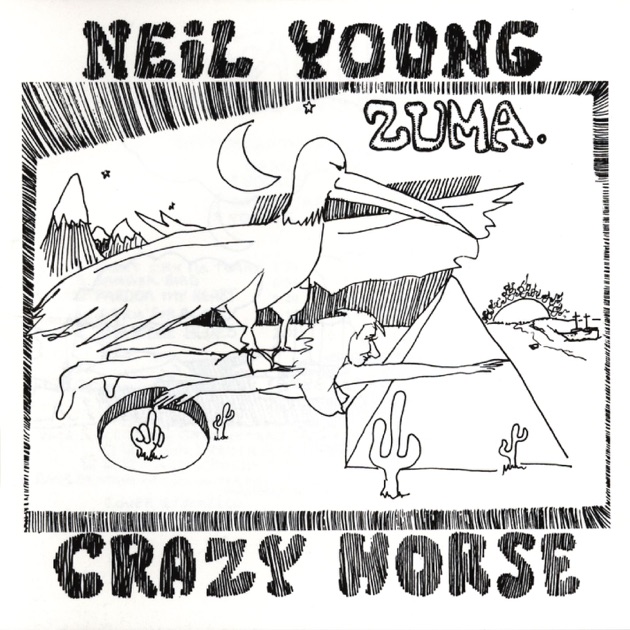 It feels silly to call Zuma a “bright” album, but in the aftermath of the bleak, grief-wrought hollers of the Ditch Trilogy, these songs are colorful enough to warrant such a label. Gone is the cynicism of Tonight’s the Night and the anti-celebrity of On the Beach, substituted for hard-nosed, stoned-to-the-bone rock music made by four men unconcerned with preconception or tradition—men who let Zuma become a blueprint for bands Dinosaur Jr. and Pavement. Frank Sampedro’s rhythm guitar is a standout here, consistently underscoring Neil Young’s bruising lead lines. And the unkempt drumming from Ralph Molina, paired with Billy Talbot’s always reliable bass playing, fill out the rhythmic asides on songs like “Danger Bird,” “Barstool Blues,” and “Stupid Girl.” But what Zuma is known for is “Cortez the Killer,” the album’s 7-and-a-half-minute centerpiece Young claimed to have written in high school while suffering from “Montezuma’s Revenge.” The “Cortez” in question seems to be Hernán Cortés, the Spanish conquistador who conquered Mexico in the 1500s. “Cortez the Killer” was once critiqued for its sympathetic and idyllic portrayal of Mesoamerica, but a simple lyrical analysis immediately shows that Young isn’t aiming to admonish the plights of yesteryear so much as take their existence and plug them into a modern, personal conversation. “Hate was just a legend and war was never known,” he proclaims. “The people worked together and they lifted many stones.” There are a few lines that call back to Young’s recent breakup with Carrie Snodgress. “And I know she’s living there, and she loves me to this day,” he sings. “I still can’t remember when, or how I lost my way.” One of the sharpest examples of interweaving history with personal narrative, “Cortez the Killer” propels Zuma into a benchmark in Young’s discography that remains largely unmatched. —Matt Mitchell
It feels silly to call Zuma a “bright” album, but in the aftermath of the bleak, grief-wrought hollers of the Ditch Trilogy, these songs are colorful enough to warrant such a label. Gone is the cynicism of Tonight’s the Night and the anti-celebrity of On the Beach, substituted for hard-nosed, stoned-to-the-bone rock music made by four men unconcerned with preconception or tradition—men who let Zuma become a blueprint for bands Dinosaur Jr. and Pavement. Frank Sampedro’s rhythm guitar is a standout here, consistently underscoring Neil Young’s bruising lead lines. And the unkempt drumming from Ralph Molina, paired with Billy Talbot’s always reliable bass playing, fill out the rhythmic asides on songs like “Danger Bird,” “Barstool Blues,” and “Stupid Girl.” But what Zuma is known for is “Cortez the Killer,” the album’s 7-and-a-half-minute centerpiece Young claimed to have written in high school while suffering from “Montezuma’s Revenge.” The “Cortez” in question seems to be Hernán Cortés, the Spanish conquistador who conquered Mexico in the 1500s. “Cortez the Killer” was once critiqued for its sympathetic and idyllic portrayal of Mesoamerica, but a simple lyrical analysis immediately shows that Young isn’t aiming to admonish the plights of yesteryear so much as take their existence and plug them into a modern, personal conversation. “Hate was just a legend and war was never known,” he proclaims. “The people worked together and they lifted many stones.” There are a few lines that call back to Young’s recent breakup with Carrie Snodgress. “And I know she’s living there, and she loves me to this day,” he sings. “I still can’t remember when, or how I lost my way.” One of the sharpest examples of interweaving history with personal narrative, “Cortez the Killer” propels Zuma into a benchmark in Young’s discography that remains largely unmatched. —Matt Mitchell
8. Sugar Babe: Songs
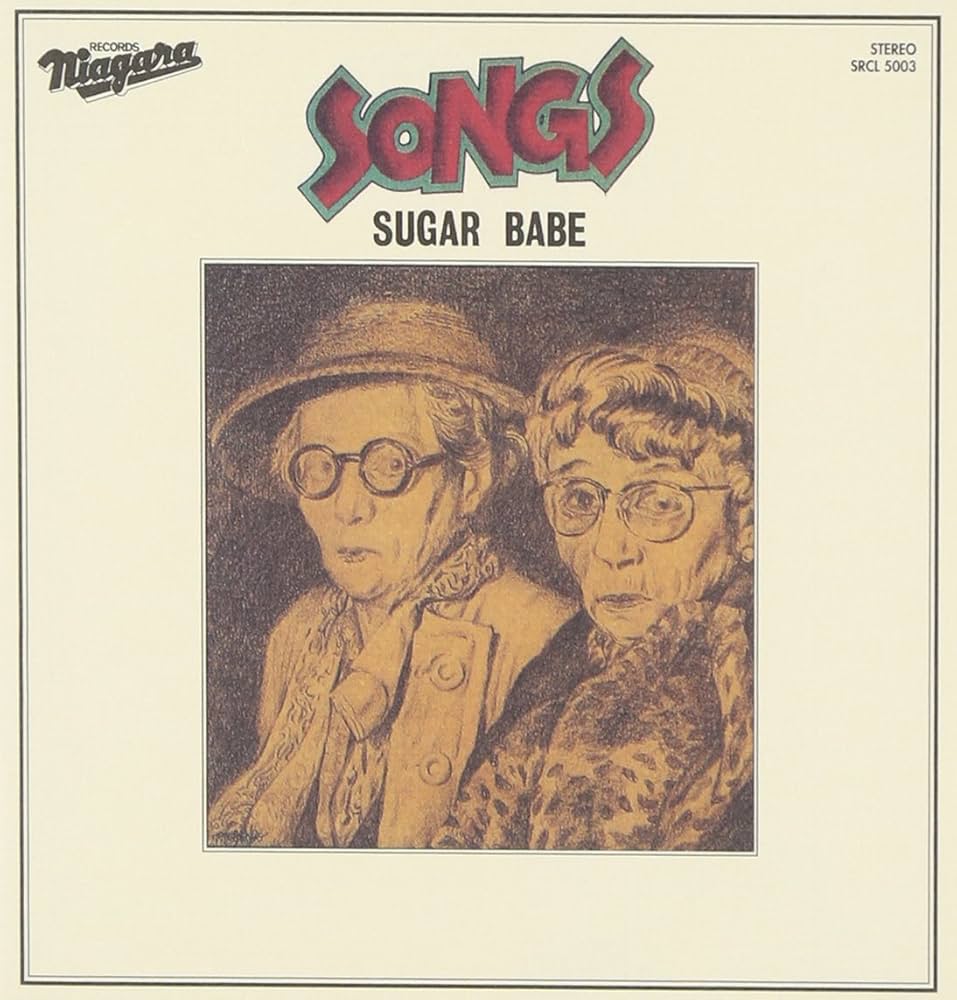 Sugar Babe were together less than five years, but their impact on Tokyo rock and roll is ever-relevant. Taeko Onuki and Tatsuro Yamashita, two of the greatest Japanese musicians of all time, formed the band with Kunio Muramatsu, but their collaboration together was met rather unfavorably in Japan—on account of the country’s then-fascination with grittier, more psychedelic and blues-oriented sounds. You could make the argument that Sugar Babe’s debut album, Songs, created the city pop genre, and its timeless, Western-influenced overtures would be rather by-the-number if they weren’t so inventive—disco punches up on rock traditions, and groovy riffs spin into countrypolitan run-outs. The vocal harmonies on “Sugar,” one of the lushest songs ever recorded, remind me of ELO, while “すてきなメロディ” pulls chords from Pachabel’s Canon and the minor chord switch during the “Down Town” chorus turns the album’s dimensions inside out, opening it up for paragraphs of jazz and reggae ascension. Sugar Babe were wonderfully charismatic, and Songs is one of the most important Eastern pop records of its era, if not ever. —Matt Mitchell
Sugar Babe were together less than five years, but their impact on Tokyo rock and roll is ever-relevant. Taeko Onuki and Tatsuro Yamashita, two of the greatest Japanese musicians of all time, formed the band with Kunio Muramatsu, but their collaboration together was met rather unfavorably in Japan—on account of the country’s then-fascination with grittier, more psychedelic and blues-oriented sounds. You could make the argument that Sugar Babe’s debut album, Songs, created the city pop genre, and its timeless, Western-influenced overtures would be rather by-the-number if they weren’t so inventive—disco punches up on rock traditions, and groovy riffs spin into countrypolitan run-outs. The vocal harmonies on “Sugar,” one of the lushest songs ever recorded, remind me of ELO, while “すてきなメロディ” pulls chords from Pachabel’s Canon and the minor chord switch during the “Down Town” chorus turns the album’s dimensions inside out, opening it up for paragraphs of jazz and reggae ascension. Sugar Babe were wonderfully charismatic, and Songs is one of the most important Eastern pop records of its era, if not ever. —Matt Mitchell
7. Billy Harper: Black Saint
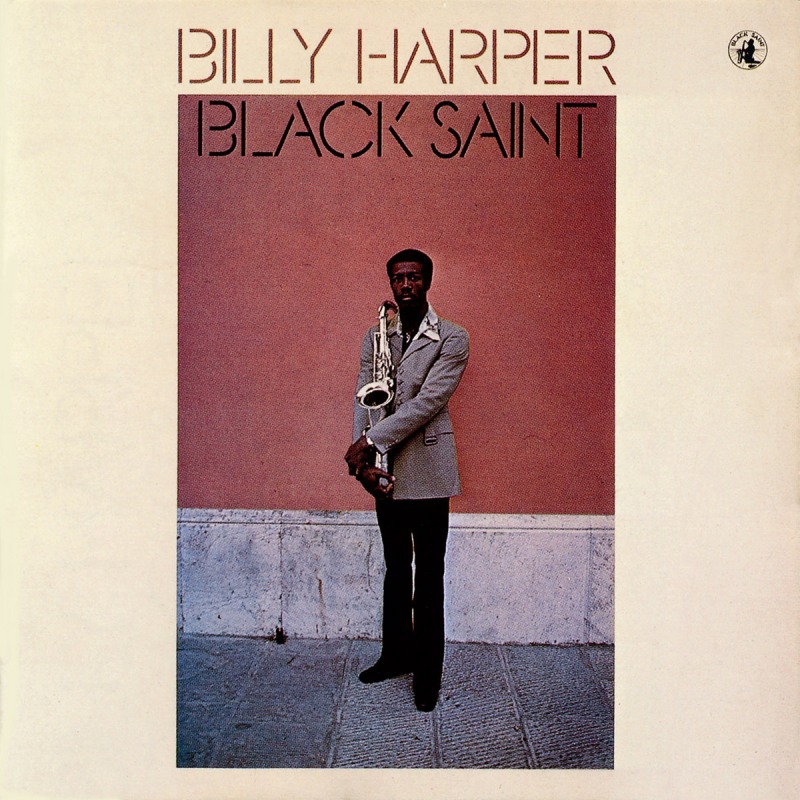 Billy Harper’s Black Saint is 41 minutes long yet contains just three songs—pieces that grow in length as the record carries on. Released in a stratified era of jazz, Harper and his band—Virgil Jones, Joe Bonner, David Friesen, and Malcom Pinson—arrive out of the ashes of experimentalism without overcomplicating, instead playing intensely against one another’s strongest bliss-out conventions. “Dance! Dance, Eternal Spirits” begins with Harper’s all-gas-no-brakes theme solo, which blows out the instrumental save for Bonner’s twinkling piano melody in the undertow. “Croquet Ballet” shines in the small details, like a tinge of cowbell and the call-and-response between Bonner’s piano and Pinson’s percussive tangents. The record culminates in the 21-minute “Call of the Wild and Peaceful Heart,” an awe-striking narrative of chemistry, one that posits Harper and his crew as hidden-in-plain-sight superstars. The music rises in angular swells, Bonner’s piano flutters, and the drums lock the groove back into place. Black Saint is among the greatest post-bop records of its time, and a striking and spiritual triumph in the post-Coltrane era of jazz music altogether. What these three compositions prove is that Harper’s voice was, and remains, equally genre-altering. —Matt Mitchell
Billy Harper’s Black Saint is 41 minutes long yet contains just three songs—pieces that grow in length as the record carries on. Released in a stratified era of jazz, Harper and his band—Virgil Jones, Joe Bonner, David Friesen, and Malcom Pinson—arrive out of the ashes of experimentalism without overcomplicating, instead playing intensely against one another’s strongest bliss-out conventions. “Dance! Dance, Eternal Spirits” begins with Harper’s all-gas-no-brakes theme solo, which blows out the instrumental save for Bonner’s twinkling piano melody in the undertow. “Croquet Ballet” shines in the small details, like a tinge of cowbell and the call-and-response between Bonner’s piano and Pinson’s percussive tangents. The record culminates in the 21-minute “Call of the Wild and Peaceful Heart,” an awe-striking narrative of chemistry, one that posits Harper and his crew as hidden-in-plain-sight superstars. The music rises in angular swells, Bonner’s piano flutters, and the drums lock the groove back into place. Black Saint is among the greatest post-bop records of its time, and a striking and spiritual triumph in the post-Coltrane era of jazz music altogether. What these three compositions prove is that Harper’s voice was, and remains, equally genre-altering. —Matt Mitchell
6. Bob Dylan: Blood on the Tracks
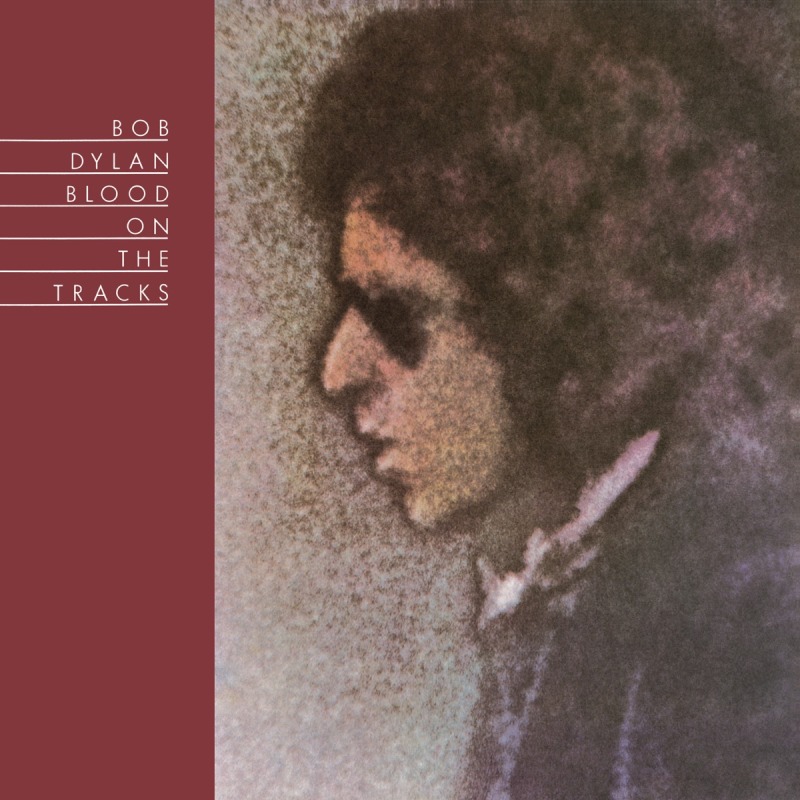 While it’s not a shocking pick to make, there is no doubting that Blood on the Tracks is not just Bob Dylan’s greatest album, but one of the single greatest records in the history of modern music as we know it, too. Though Dylan has long denied that Blood on the Tracks is an autobiographical album, it’s widely assumed that the 10 songs are greatly inspired by his estrangement from his then-wife Sara Lownds. What is true, no matter what, is that the album is a perfect breakup story that really gnaws away at the brutality of interpersonal grief and the anger, loss and vindictiveness that arises between two people who love each other but can’t keep growing together. “Tangled Up in Blue” is one of Dylan’s greatest songs ever, while “Simple Twist of Fate,” “Shelter from the Storm” and “Buckets of Rain” are cornerstones in his catalog. But when I revisit Blood on the Tracks, I immediately retreat to the singularity of “Idiot Wind” and “If You See Her, Say Hello,” two of Dylan’s finest lyrical outings that are often underscored by the more palatable and immediately devastating folk tunes on the album. After a string of so-so outings between 1970 and 1974 that didn’t move the needle much on his legacy, Blood on the Tracks was a welcomed return to form for Dylan—an album that cemented him, likely for good, as the greatest songwriter ever. No musician produced a narrative as sharp and devastating before Blood on the Tracks came out, and no one has come close since. —Matt Mitchell
While it’s not a shocking pick to make, there is no doubting that Blood on the Tracks is not just Bob Dylan’s greatest album, but one of the single greatest records in the history of modern music as we know it, too. Though Dylan has long denied that Blood on the Tracks is an autobiographical album, it’s widely assumed that the 10 songs are greatly inspired by his estrangement from his then-wife Sara Lownds. What is true, no matter what, is that the album is a perfect breakup story that really gnaws away at the brutality of interpersonal grief and the anger, loss and vindictiveness that arises between two people who love each other but can’t keep growing together. “Tangled Up in Blue” is one of Dylan’s greatest songs ever, while “Simple Twist of Fate,” “Shelter from the Storm” and “Buckets of Rain” are cornerstones in his catalog. But when I revisit Blood on the Tracks, I immediately retreat to the singularity of “Idiot Wind” and “If You See Her, Say Hello,” two of Dylan’s finest lyrical outings that are often underscored by the more palatable and immediately devastating folk tunes on the album. After a string of so-so outings between 1970 and 1974 that didn’t move the needle much on his legacy, Blood on the Tracks was a welcomed return to form for Dylan—an album that cemented him, likely for good, as the greatest songwriter ever. No musician produced a narrative as sharp and devastating before Blood on the Tracks came out, and no one has come close since. —Matt Mitchell
5. Curtis Mayfield: There’s No Place Like America Today
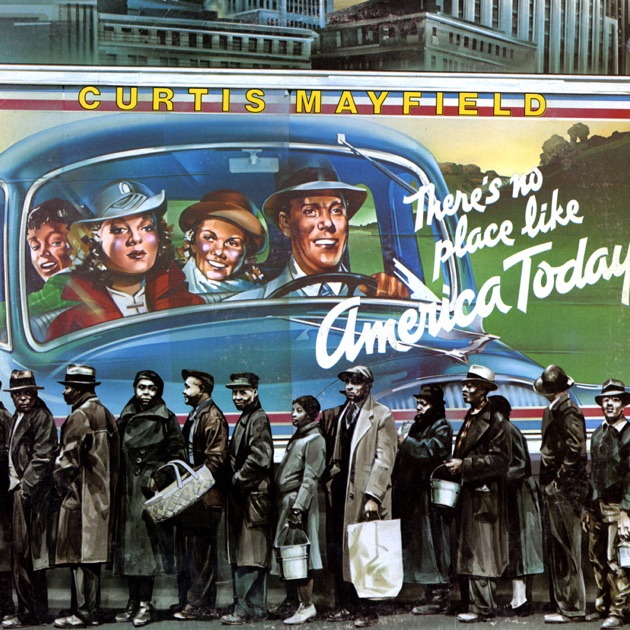 By the time Curtis Mayfield got around to putting out There’s No Place Like America Today in May 1975, he’d put out seven LPs in less than five years. Just as Marvin Gaye’s What’s Going On was a product of its time and a stirring account of a racially divided, post-counterculture-era America on the precipice of the Vietnam War’s conclusion, Mayfield’s There’s No Place Like America Today sought to articulate the disparity between the American Dream and the common man’s washed-away reality. Considering that violent crime rates were increasing at a concerning clip, political scandals tinted Pennsylvania Avenue pitch-black, and the automotive industry was flattened by surging oil prices by 1975, it’s no surprise that Mayfield, one of recorded music’s least-didactic storytellers, would come up for air with an album-long contradiction. There’s No Place Like America Today is bleak but comforting, a record that doesn’t scorn or question but, rather, chronicles—as Mayfield’s funk and soul textures remain warm even when they’re wrapped around solemn portraits of a country not in flux, but staggeringly routine, brutal, and familiar. —Matt Mitchell
By the time Curtis Mayfield got around to putting out There’s No Place Like America Today in May 1975, he’d put out seven LPs in less than five years. Just as Marvin Gaye’s What’s Going On was a product of its time and a stirring account of a racially divided, post-counterculture-era America on the precipice of the Vietnam War’s conclusion, Mayfield’s There’s No Place Like America Today sought to articulate the disparity between the American Dream and the common man’s washed-away reality. Considering that violent crime rates were increasing at a concerning clip, political scandals tinted Pennsylvania Avenue pitch-black, and the automotive industry was flattened by surging oil prices by 1975, it’s no surprise that Mayfield, one of recorded music’s least-didactic storytellers, would come up for air with an album-long contradiction. There’s No Place Like America Today is bleak but comforting, a record that doesn’t scorn or question but, rather, chronicles—as Mayfield’s funk and soul textures remain warm even when they’re wrapped around solemn portraits of a country not in flux, but staggeringly routine, brutal, and familiar. —Matt Mitchell
4. Milton Nascimento: Minas
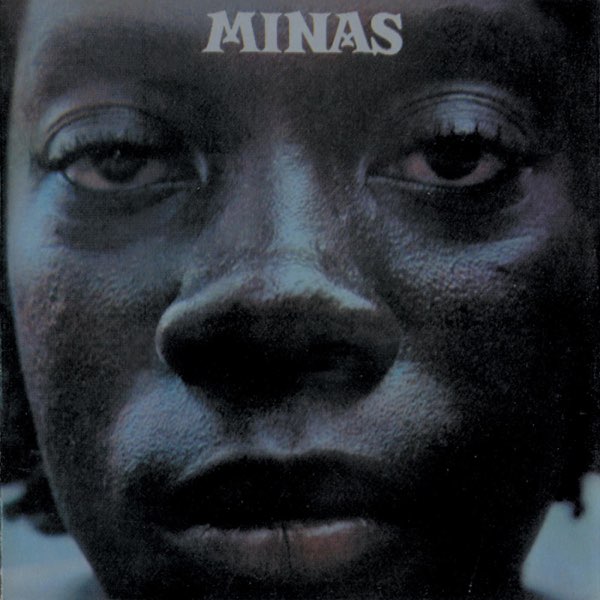 In 1972, Milton Nascimento and Lô Borges made Clube da Esquina, one of the greatest records of all time. Fast-forward three years, and a solo Nascimento, fresh off his collaboration with jazz saxophonist Wayne Shorter, would pen Minas, an MPB masterpiece inexplicably sunny and ornate. He and his band are wreathed in complex string structures, charting sophisticated bossa nova melodies and otherworldly, out-of-body narratives through poetic and charged arrangements that have undoubtedly stood the test of time. Songs like “Gran Circo” and the Beto Guedes-assisted “Fé Cega, Faca Amolada” rapture within you, with cosmic voices like codes to unlock new courage. Back-side suites like “Trastevere” and “Idolatrada” push in complexity with every growing minute, challenging listeners upon flourishes of tangential orchestration, youth choirs, divine swells of ruptured blues and fundamental rock touchstones. You mustn’t forget about Minas. Life’s a beach in the warmth of its touch. —Matt Mitchell
In 1972, Milton Nascimento and Lô Borges made Clube da Esquina, one of the greatest records of all time. Fast-forward three years, and a solo Nascimento, fresh off his collaboration with jazz saxophonist Wayne Shorter, would pen Minas, an MPB masterpiece inexplicably sunny and ornate. He and his band are wreathed in complex string structures, charting sophisticated bossa nova melodies and otherworldly, out-of-body narratives through poetic and charged arrangements that have undoubtedly stood the test of time. Songs like “Gran Circo” and the Beto Guedes-assisted “Fé Cega, Faca Amolada” rapture within you, with cosmic voices like codes to unlock new courage. Back-side suites like “Trastevere” and “Idolatrada” push in complexity with every growing minute, challenging listeners upon flourishes of tangential orchestration, youth choirs, divine swells of ruptured blues and fundamental rock touchstones. You mustn’t forget about Minas. Life’s a beach in the warmth of its touch. —Matt Mitchell
3. Joni Mitchell: The Hissing of Summer Lawns
 Forget Court and Spark. Forget Hejira. Hell, forget Clouds. There is something understated about the singularity of The Hissing of Summer Lawns, Joni Mitchell’s seventh studio album. It found the folk heroine branching away from the bedrock of her own sound and embracing a more avant-leaning framework—which included sampling, Moog synths, and elements performed by the LA Express and the Jazz Crusaders. It was, at the time, Mitchell’s most ambitious album ever. It was also her most liberated, focusing on a rebellion against patriarchal tropes and the mundanity of suburbia. With no hit singles in tow and a bunch of negative reviews upon release, The Hissing of Summer Lawns was treated like a career suicide by Mitchell’s peers and critics. But that just wasn’t the case. Instead, songs like “Edith and the Kingpin,” “In France They Kiss on Main Street,” and “Don’t Interrupt the Sorrow” are some of Mitchell’s greatest songs ever. The naysayers have either died out or finally come around to the brilliance of The Hissing of Summer Lawns, and there’s always more room for devotion on this side of the tracks. Join us. —Matt Mitchell
Forget Court and Spark. Forget Hejira. Hell, forget Clouds. There is something understated about the singularity of The Hissing of Summer Lawns, Joni Mitchell’s seventh studio album. It found the folk heroine branching away from the bedrock of her own sound and embracing a more avant-leaning framework—which included sampling, Moog synths, and elements performed by the LA Express and the Jazz Crusaders. It was, at the time, Mitchell’s most ambitious album ever. It was also her most liberated, focusing on a rebellion against patriarchal tropes and the mundanity of suburbia. With no hit singles in tow and a bunch of negative reviews upon release, The Hissing of Summer Lawns was treated like a career suicide by Mitchell’s peers and critics. But that just wasn’t the case. Instead, songs like “Edith and the Kingpin,” “In France They Kiss on Main Street,” and “Don’t Interrupt the Sorrow” are some of Mitchell’s greatest songs ever. The naysayers have either died out or finally come around to the brilliance of The Hissing of Summer Lawns, and there’s always more room for devotion on this side of the tracks. Join us. —Matt Mitchell
2. Fela Kuti & Africa ‘70: Expensive Shit
 You can say a whole lot with just two songs. That’s what Fela Kuti and Africa ‘70 did 50 years ago on Expensive Shit, perhaps the greatest Afrobeat record ever gifted unto this planet. Before writing Expensive Shit, Kuti was a constant target of Nigeria’s police state, and the title of the record refers to him eating a joint planted on him by cops. These 26 minutes of music are his response to their boot on his neck. “People wey go like to quench your soul,” he tells the world on the title track. “Them go use your shit to put you for jail.” On side two, the Yoruban proverb-inspired “Water No Get Enemy” is a document of aftermath and fantasy—of a peace yearned for by Kuti. The tribal rhythms of the 12-man Africa ‘70 compliment Kuti’s saxophone, turning the funk epic into an exploratory, sweeping madcap of euphoric, liberating creativity. These are 13 musicians not only devoted to the music stirring within and without them, but locked into one another. Nothing you’ve heard sounds quite like it. —Matt Mitchell
You can say a whole lot with just two songs. That’s what Fela Kuti and Africa ‘70 did 50 years ago on Expensive Shit, perhaps the greatest Afrobeat record ever gifted unto this planet. Before writing Expensive Shit, Kuti was a constant target of Nigeria’s police state, and the title of the record refers to him eating a joint planted on him by cops. These 26 minutes of music are his response to their boot on his neck. “People wey go like to quench your soul,” he tells the world on the title track. “Them go use your shit to put you for jail.” On side two, the Yoruban proverb-inspired “Water No Get Enemy” is a document of aftermath and fantasy—of a peace yearned for by Kuti. The tribal rhythms of the 12-man Africa ‘70 compliment Kuti’s saxophone, turning the funk epic into an exploratory, sweeping madcap of euphoric, liberating creativity. These are 13 musicians not only devoted to the music stirring within and without them, but locked into one another. Nothing you’ve heard sounds quite like it. —Matt Mitchell
1. Bruce Springsteen: Born to Run
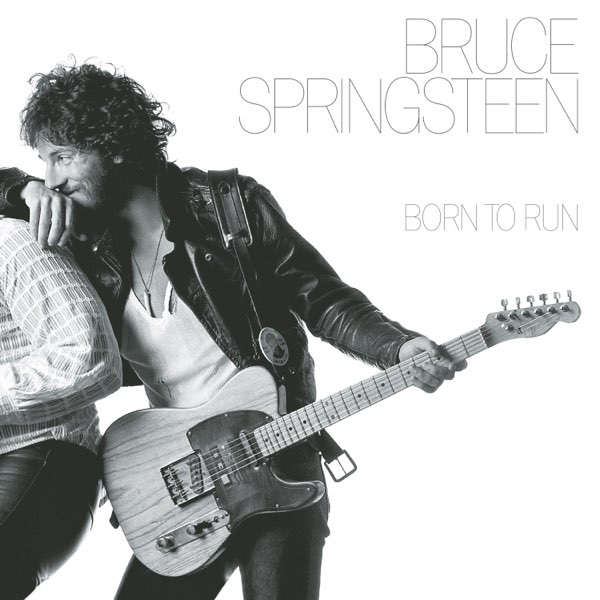 The most cohesive rock and roll album ever made, Born to Run turned Bruce Springsteen into a superstar for the rest of his life. It brandishing the greatest title track of all time is one thing, but that title track being maybe the fifth-best song on the entire album is just a feat rarely accomplished by anybody in the history of modern music. But it’s true, as “Tenth Avenue Freeze-Out,” “Backstreets,” “Jungleland,” and “Thunder Road” perfectly encapsulate not only Springsteen’s monolithic, nostalgic, metaphor-doused songwriting, but they are top examples of just how great the E Street Band has always been. Born to Run is a journey chronicled by our greatest journeyman, full of tracks that’ll raise the hair on your neck while you’re cruising into the city with the top down. On Born to Run, the nightlife sounds conquerable. The battles against life’s relentless erosion feel winnable. Springsteen is standing before us with a grin and a guitar and he knows how to make it talk. There are killers in the sun, moons casting across the river’s shimmering surface, fleeting attractions to street-tough beauties. Born to Run dares you to leave your youth behind and embrace the reachable horizon resting before you, promising that the ghosts will only tail you for a moment. —Matt Mitchell
The most cohesive rock and roll album ever made, Born to Run turned Bruce Springsteen into a superstar for the rest of his life. It brandishing the greatest title track of all time is one thing, but that title track being maybe the fifth-best song on the entire album is just a feat rarely accomplished by anybody in the history of modern music. But it’s true, as “Tenth Avenue Freeze-Out,” “Backstreets,” “Jungleland,” and “Thunder Road” perfectly encapsulate not only Springsteen’s monolithic, nostalgic, metaphor-doused songwriting, but they are top examples of just how great the E Street Band has always been. Born to Run is a journey chronicled by our greatest journeyman, full of tracks that’ll raise the hair on your neck while you’re cruising into the city with the top down. On Born to Run, the nightlife sounds conquerable. The battles against life’s relentless erosion feel winnable. Springsteen is standing before us with a grin and a guitar and he knows how to make it talk. There are killers in the sun, moons casting across the river’s shimmering surface, fleeting attractions to street-tough beauties. Born to Run dares you to leave your youth behind and embrace the reachable horizon resting before you, promising that the ghosts will only tail you for a moment. —Matt Mitchell















